

Johns Hopkins University (JHU) continues to pad its space community résumé with their interactive map, “The map of the observable Universe”, that takes viewers on a 13.7-billion-year-old tour of the cosmos from the present to the moments after the Big Bang. While JHU is responsible for creating the site, additional contributions were made by NASA, the European Space Agency, the National Science Foundation, and the Sloan Foundation.
How Milankovitch Cycles Are causing Earth’s Climate To Change Climate change and the Earth's ice ages are cyclical events that have occurred on Earth for thousands of years. However, until relatively recently, it was not known exactly what caused these cycles or how they occurred. But today, we know these have to do with "Milankovitch Orbital Variations (or Cycles)." But exactly how do these cycles work, and what produces them? Can the Milankovitch Cycles help us predict how climate change will behave in the future? What are the Milankovitch Orbital Variations? Also known as the Milankovitch cycles, these periodic variations in the Earth's orbit and orientation influence long-term climate and are closely related to glaciations and interglacial periods. What are orbital elements? To better understand the Milankovitch cycles, we must first understand what orbital elements are. Orbital elements are parameters that describe the shape and orientation of the orbit of one celestial body around another, such as a planet around the Sun. These elements determine how the distance and inclination of the body in its orbit varies, affecting the amount and distribution of solar energy it receives. In astronomy, a celestial body can have up to 7 orbital elements; however, to understand the Milankovitch cycles, it is enough to understand mainly three, and those are: 1.Eccentricity Eccentricity refers to the shape of the Earth's orbit around the Sun, which varies from being more circular to more elliptical in a cycle of about 100,000 years. . 2.Obliquity Obliquity refers to the angle of inclination of the Earth's axis concerning its orbital plane and varies between 22.1° and 24.5° over a cycle of about 41,000 years. 3.Precession Precession is the slow, gradual movement of the Earth's axis of rotation, similar to the wobble of a spinning top. It has a cycle of about 26,000 years. Do Milankovitch cycles cause ice ages? The Milankovitch cycles are fundamental to understanding the Earth's climate fluctuations over the last few million years. These cycles directly influence the amount and distribution of solar radiation the Earth receives, affecting global temperatures, precipitation patterns, and glacier formation. Are the Milankovitch Cycles the answer to climate change? Although the Milankovitch cycles provide a compelling explanation for many aspects of natural climate change, certain discrepancies and challenges have arisen in correlating these cycles with observed climate records. The two most prominent are the "Middle Pleistocene Transition" and the "Stage 5e Paradox." 1)The Middle Pleistocene Transition One of the critical challenges in Milankovitch's theory is the so-called Middle Pleistocene Transition, a change in glaciation patterns that occurred about 1 million years ago. The Paradox of Stadium 5e Another discrepancy is the well-known problem of Stage 5e, an interglacial period about 130,000 years ago. . Milankovitch cycles on Other Planets The principles of Milankovitch's orbital variations are not limited to Earth alone. In fact, these cycles have also been observed and studied on other planets in the solar system, providing a broader perspective on how orbital dynamics may influence planetary climates. The importance of the Milankovitch cycles The Milankovitch Orbital Variations constitute an essential component for understanding long-term climate changes on Earth and other bodies in the solar system. -- DISCUSSIONS & SOCIAL MEDIA E-mail:Commercial Purposes: Tik Tok: Tik Tok: Reddit: Instagram: Twitter: Facebook: Linkedin: Our Website: -- Credits: Ron Miller, Mark A. Garlick / MarkGarlick.com ,Elon Musk/SpaceX/ Flickr -- 00:00 Intro 2:35 What are orbital elements? 3:20 1)eccentricity 4:20 2) obliquity 4:50 3) precession 5:48 Do Milankovitch cycles cause ice ages? 7:50 Are the Milankovitch Cycles the answer to climate change? 10:10 Mars orbital elements 11:30 Saturn and Neptune orbital elements 12:40 The importance of the Milankovitch cycles
There's a ghost that has always haunted the climate change debate. It's the ghost of a Serbian mathematician who, just before the outbreak of World War I, during the Belle Époque, had the audacious idea of trying to trace the causes of the ice ages our planet has gone through over the last hundreds of thousands of years. The mathematician's name was Milutin Milankovitch, and his theory is still at the center of heated debates. Some see it as proof that climate changes—without the invasive presence of our species—occur purely due to natural causes, particularly astronomical ones. Others believe that the current global warming is mainly the work of humans. Who's right? The link between Milankovitch cycles and Earth's climate has been demonstrated through the analysis of climatic data and geological evidence. However, if ice ages were solely caused by astronomical circumstances, it would be relatively easy to establish that the cold-warm cycles should repeat—very slowly—approximately every 40,000 years. And not show such a fast progression as we've seen in less than a century! DISCUSSIONS & SOCIAL MEDIA E-mail:Commercial Purposes: Tik Tok: Tik Tok: Reddit: Instagram: Twitter: Facebook: Linkedin: Our Website: Credits: Ron Miller, Mark A. Garlick / MarkGarlick.com ,Elon Musk/SpaceX/ Flickr -- 00:00 Intro 1:37 Assassin's Bottle Sponsor 2:47 Cycles Explained First Variable ( Orbital Eccentricity) 6:20 Second Variable ( Tilt of the Earth't Rotation Axis) 7:25 Third Variable ( Variation of the Rotation Axis) 14:03 Nonlinear Dynamics
P>
✪ Members first on March 8, 2025 #iceage #earth #milankovitch Get a Wonderful Person shirt: Alternatively, PayPal donations can be sent here: More cool designs are on Amazon: Hello and welcome! My name is Anton and in this video, we will talk about Milankobitch cycles and the ice ages Links: Distinct roles for precession, obliquity, and eccentricity in Pleistocene 100-kyr glacial cycles The importance of Canadian Arctic Archipelago gateways for glacial expansion in Scandinavia Previous video:: Previously Unknown Impact 2.5 Million Years Ago Possibly Started the Ice Ages #iceage #earth #milankovitch 0:00 Milankovitch cycles and how ice ages started 2:05 Milankovitch cycles explained 3:30 What starts the ice formation and how do ice sheets form? 4:40 How does this connect to Milankovitch cycles? 5:30 Issues with cycle calculations 6:20 Study discovers new patterns and how cycles affect the glaciation 8:10 Next ice age will begin in... 9:10 Why does this happen? 10:30 Small issues in the study 11:35 Conclusions Support this channel on Patreon to help me make this a full time job: Bitcoin/Ethereum to spare? Donate them here to help this channel grow! bc1qnkl3nk0zt7w0xzrgur9pnkcduj7a3xxllcn7d4 or ETH: 0x60f088B10b03115405d313f964BeA93eF0Bd3DbF Space Engine is available for free here: Enjoy and please subscribe. Twitter: Facebook: Twitch: The hardware used to record these videos: CPU: Video Card: Motherboard: RAM: PSU: Case: Microphone: Mixer: Recording and Editing: Thank you to all Patreon supporters of this channel Special thanks also goes to all the wonderful supporters of the channel through YouTube Memberships Credit: Hannes Grobe, Alfred Wegener Institute for Polar and Marine Research CC BY SA 2.5 Tomruen CC BY-SA 3.0 Licenses used: Licenses by 4.0 Licenses by-sa 4.0 Licenses by 3.0 Licenses by-sa 3.0 Licenses by 2.5 Licenses by-sa 2.5 Licenses by 2.0 Licenses by-sa 2.0
Hannes Grobe, Alfred Wegener Institute for Polar and Marine Research CC BY SA 2.5
Glacial period From Wikipedia
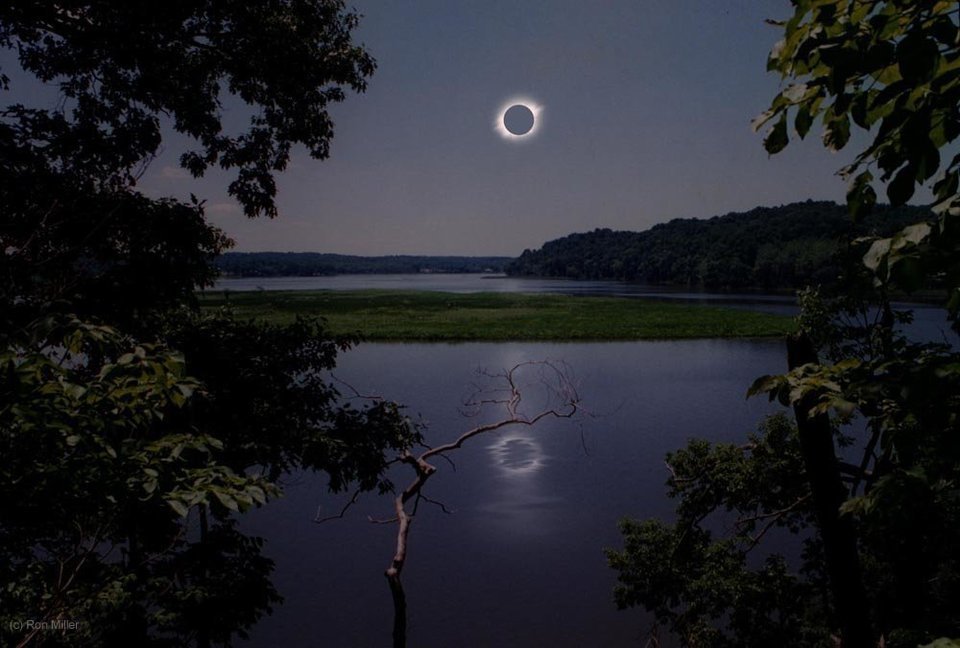

Use my link including a copy of Jules Verne's "20,000 Leagues Under the Sea" and a 30-day free trial of Audible. Our seas and oceans have always been central to our civilization, but only the thin layer at the top. In many ways the ocean depths remain more of a mystery to us than distant worlds. And yet, they may be of great value to us as future homes for humanity. Visit our Website: Support us on Patreon: SFIA Merchandise available: Social Media: Facebook Group: Reddit: on Twitter and RT our future content. SFIA Discord Server: Listen or Download the audio of this episode from Soundcloud: Episode's Audio-only version: Episode's Narration-only version: Credits: Earth 2.0: Colonizing the Oceans Episode 156, Season 4 E42 Writers: Isaac Arthur Editors: A.T. Long Darius Said Evan Schultheis Jerry Guern Keith Blockus Gregory Leal Mark Warburton Sergio Botero Producer: Isaac Arthur Cover Artist: Jakub Grygier Graphics Team: Fishy Tree Jarred Eagley Jeremy Jozwik Justin Dixon Katie Byrne Ken York of YD Visual Sergio Botero Narrator: Isaac Arthur Music Manager: Luca DeRosa - lucaderosa2@live.com Music: Denny Schneidemesser, "Across the Universe" Markus Junnikkala, "Always Tell Me The Odds" Stellardrone, "On A Beam Of Light, Outrospace Kai Engel, "Endless Story About Sun and Moon" The Islands moved while I was asleep Serena Elis, "Between the space" Ross Bugden, "Legend of Styk" Caption author (Portuguese) João Gomes
Use my link or text "ISAAC" to 500-500 to get a free book including a copy of Sir Terry Pratchett's "The Hogfather" Humanity has long had outposts in the barren tundra lands of the arctic, but only in recent times have we visited the poles or the entire continent of Antarctica. In this episode we will explore how me use technology in the future to make cold permafrost into verdant farmland through greenhouses, solar mirrors, geothermal, or other techniques, as well as how we might follow a different path, and adapt our civilization to prosper among perpetual winter and ice. Visit our Website: Support us on Patreon: SFIA Merchandise available: Social Media: Facebook Group: Reddit: on Twitter and RT our future content. SFIA Discord Server: Listen or Download the audio of this episode from Soundcloud: Episode's Audio-only version: Episode's Narration-only version: Credits: Earth 2.0: Colonizing the Arctic Episode 164, Season 4 E50 Writers: Isaac Arthur Editors: A.T. Long Daniel McNamara Darius Said Evan Schultheis Keith Blockus Mark Warburton Matthew Campbell Producer: Isaac Arthur Cover Artist: Jakub Grygier Graphics Team : Andy Popescu Jeremy Jozwik Ken York of YD Visual Kris Holland (Mafic Studios) Sergio Botero SpaceResourcesCGI Narrator: Isaac Arthur Music Manager: Luca DeRosa Music: Paradox Interactive, "Towardsutopia" & "The Titan" Marcus Warner, "The Blue Edge" Taras Harkavyi, "Alpha-and-...." Stellardrone, "Infinite Void Ayreon, "Aquatic Race" Aerium, "Drowned Holodecks" Markus Junnikkala, "Always Tell Me The Odds"
Could the future of humanity be at sea? Visit our sponsor, Brilliant: Our seas and oceans have long been central to human civilization, while at the same time we built dikes and islands to reclaim land. As technology improves, we may see even more ambitious efforts in the future. In the episode we will explore the options, both for ways we may extend our civilization to the sea and the motives of doing so. We will also look at seasteads and seasteading, artificial islands built in international waters with the intent of being new, sovereign nations. Join this channel to get access to perks: / @isaacarthursfia Visit our Website: Join Nebula: Support us on Patreon: Support us on Subscribestar: Reddit: on Twitter and RT our future content: :SFIA Discord Server Listen or Download the audio of this episode from Soundcloud: Episode's Audio-only version: Episode's Narration-only version: Credits: Earth 2.0: Seasteading & Artificial Islands Episode 154, Season 4 E40 Writers: Isaac Arthur Editors: Darius Said Evan Schultheis Jerry Guern Keith Blockus Matthew Acker Mark Warburton Producer: Isaac Arthur Cover Artist:Jakub Grygier Justin Dixon Ken York of YD Visual / ydvisual Music: Denny Schneidemesser, "Across the Universe" / denny-schneidemesser Markus Junnikkala, "Always Tell Me The Odds" Stellardrone, "On A Beam Of Light, Outrospace" Kai Engel, "Endless Story About Sun and Moon" Aerium, "The Islands moved while I was asleep" / @officialaerium Serena Elis, "Between the space" / serenaelis Ross Bugden, "Legend of Styk" / @rossbugden
Could Earth be home to a trillion people, or even more? We'll explore if we can do this with current technology, what future technologies would help, and what such a planet-wide city, an Ecumenopolis, might be like. Get a free month of Curiosity Stream: Join this channel to get access to perks: / @isaacarthursfia Visit our Website: Join Nebula: Support us on Patreon: Support us on Subscribestar: Facebook Group Reddit: Twitter:on Twitter and RT our future content. SFIA Discord Server: Listen or Download the audio of this episode from Soundcloud: Episode's Audio-only version: / trillion-people-earth Episode's Narration-only version: / trillion-people-earth-narration-only Credits: Can we have a Trillion People on Earth? Episode 229a, March 15, 2020 Writers: Isaac Arthur Editors: Berindeanu Cosmin Evan Schultheis Darius Said Derek Hightower Dillon Ollander Jerry Guern Keith Blockus Phonetic Failure S. Kopperud Timothy Burns Produced & Narrated by: Isaac Arthur Graphics: Bryan Versteeg Katie Byrne Kris Holland (Mafic Studios) Sergio Botero Music Courtesy of Epidemic Sound
Climate Change can occur from many sources, natural or manmade. In order to handle these problems we may wish to utilize many of the technologies we've developed for future space exploration, colonization, and terraforming. Get a free month of Curiosity Stream: Join this channel to get access to perks: / @isaacarthursfia Visit our Website: Join Nebula: Support us on Patreon: Support us on Subscribestar: Facebook Group: Reddit: on Twitter and RT our future content: SFIA Discord Server Listen or Download the audio of this episode from Soundcloud: Episode's Audio-only version: / climate-change-mitigation Episode's Narration-only version: / moon-crater-cities-narration-only Credits: Climate Change Mitigation: Near Term Solutions Episode 226 Feb 20, 2020 Writers: Isaac Arthur Editors: Darius Said Evan Schultheis Phonetic Failure Berindeanu Cosmin (Sapioit) Produced & Narrated by: Isaac Arthur Cover Art: Jakub Grygier Graphics: Jarred Eagley Jeremy Jozwik Kris Holland (Mafic Studios) Sergio Botero Udo Schroeter Music Courtesy of Epidemic Sound
Our deserts have been slowly expanding, consuming arable land and neighboring ecosystems. Can we push them back, or even turn them into lush oases and fertile farmland? We will investigate the available options, and consequences, with both modern technology and those which may emerge in the future. Visit our sponsor, Brilliant: Check out Real Engineering's Terraforming the Sahara: • Can We Terraform the Sahara to Stop C... Join this channel to get access to perks: / @isaacarthursfia Visit our Website: Join Nebula: Support us on Patreon: Support us on Subscribestar: Facebook Group: Reddit: / isaacarthur TReddit: on Twitter and RT our future content: SFIA Discord Server Episode's Audio-only version:Listen or Download the audio of this episode from Soundcloud:/ reclaiming-the-deserts Episode's Narration-only version: / reclaiming-the-deserts-narration-only Credits: Earth 2.0: Reclaiming the Deserts Episode 159, Season 4 E45 Writers: Isaac Arthur Editors: Alberto Imbrosciano Daniel McNamara Darius Said Edward Nardella Gregory Leal Jerry Guern Keith Blockus Matthew Campbell Producer: Isaac Arthur Cover Artist: Jakub Grygier Graphics Team: Jarred Eagley Jeremy Jozwik Ken York Kris Holland (Mafic Studios) Sergio Botero Narrator: Isaac Arthur Music Manager: E-mail: Luca DeRosa - Music: Denny Schneidemesser, "Across the Universe" / denny-schneidemesser Aerium, "Drowned Holodecks" / @officialaerium A.J. Prasad, "Dark Future" • Dark Future - Staring Through (Part I... Kai Engel, "Endless Story About Sun and Moon"
Humanity has long wished to dwell among the clouds, today we'll look at what options we may have in the future for floating a city or home high in the sky. Visit our sponsor, Brilliant: Join this channel to get access to perks: / @isaacarthursfia Visit our Website: Join Nebula: Support us on Patreon: Support us on Subscribestar: Facebook Group: Reddit: on Twitter and RT our future content: SFIA Discord Server Listen or Download the audio of this episode from Soundcloud: Episode's Audio-only version:/ cloud-cities Episode's Narration-only version: / cloud-cities-narration-only Credits: Earth 2.0: Cloud Cities Episode 174, Season 5 E08 Written by: Isaac Arthur Editors: Darius Said Gloria Meadows Keith Blockus Cover Art: Jakub Grygier Graphics by: Bryan Versteeg Fishy Tree Jarred Eagley Jeremy Jozwik Katie Byrne Mike Munt Sam McNamara of Rapid Thrash Sergio Botero Space ResourcesCGI Produced & Narrated by: Isaac Arthur Music Manager: E-mail Luca De Rosa - Music: Denny Schneidemesser, "Across the Universe" / denny-schneidemesser Marcus Warner, "The Calling" Aerium, "The islands moved while I was asleep" Chris Zabriskie, "Remember Trees" Kai Engel, "Endless Story About Sun and Moon" Scott Buckley, "Static"
✪ Members first on July 18, 2024 Compare news coverage. Spot media bias. Avoid algorithms. Try Ground News today and get 40% off your subscription by going to Dark comets may make up to 60% of near-Earth objects and potentially brought water to Earth. A University of Michigan study reveals that these asteroids, mainly found between Jupiter and Mars, could harbor subsurface ice. Join us as we explore these fascinating findings with lead author Aster Taylor and co-author Darryl Seligman. Youtube Membership Podcast: Apple: More JMG Want to support the channel? : Patreon Follow us at other places! @JMGEventHorizon Music featured on Event Horizon Stellardrone Bandcamp Miguel Johnson Leerosevere bandcamp Aeriumambient Bandcamp FOOTAGE: NASA ESA/Hubble ESO - M.Kornmesser ESO - L.Calcada ESO - Jose Francisco Salgado (josefrancisco.org) NAOJ University of Warwick Goddard Visualization Studio Langley Research Center Pixabay
Learn More: Quick Intro: • Pole Shift 6000 Years Ago - New Data Catastrophe Evidence: • The Catastrophe Evidence Twitter: / sunweatherman
Feb 8, 2025 #volcanoes #earthquakes #geology There is a massive earthquake swarm occurring right now off the northeast coast of Santorini Volcano in the Christiana-Santorini-Kolumbo Volcanic Field. Is this earthquake swarm tectonic-only or indicative or an imminent volcanic event? And when is something likely to happen? Geophysicist Stefan Burns investigates Twiter now "X"> ✅ Subscribe to my channel: @StefanBurns (YOUTUBE) / stefanburnsofficial (Instagram) Kolumbo Volcano is a Sleeping Menace (from Nature): Research: 2000 - The precursory earthquake swarm in Greece 2009 - Evidence of earthquake triggering by the solid earth tides 2009 - The 1956 earthquake and tsunami in Amorgos, Greece 2021 - The sun as a significant agent provoking earthquakes 2022 - A review of tidal triggering of global earthquakes 2022 - Magma Chamber Detected Beneath an Arc Volcano With Full-Waveform Inversion of Active-Source Seismic Data 2023 - Complexity of Recent Earthquake Swarms in Greece in Terms of Non-Extensive Statistical Physics 2024 - Giant offshore pumice deposit records a shallow submarine explosive eruption of ancestral Santorini Data: Typical USGS map Earthquake sequence between Santorini Amorgos Islands since January the 28th 2025 Latest quakes near Santorini volcano in the past 7 days - list, stats and map Orbital view of the crete sea earthquakes (February 2025) Earthquakes of the last 2 days in Greece (February 9, 2025) Earthquake Calculator Grindavik (ICELAND) Earthquake Swarm from Dike Intrusion and Fissure Forming November 2023 #volcanoes #earthquakes #geology #geophysics #geoscience #USGS #santorini #greece #science #minoaneruption #archaeostuff

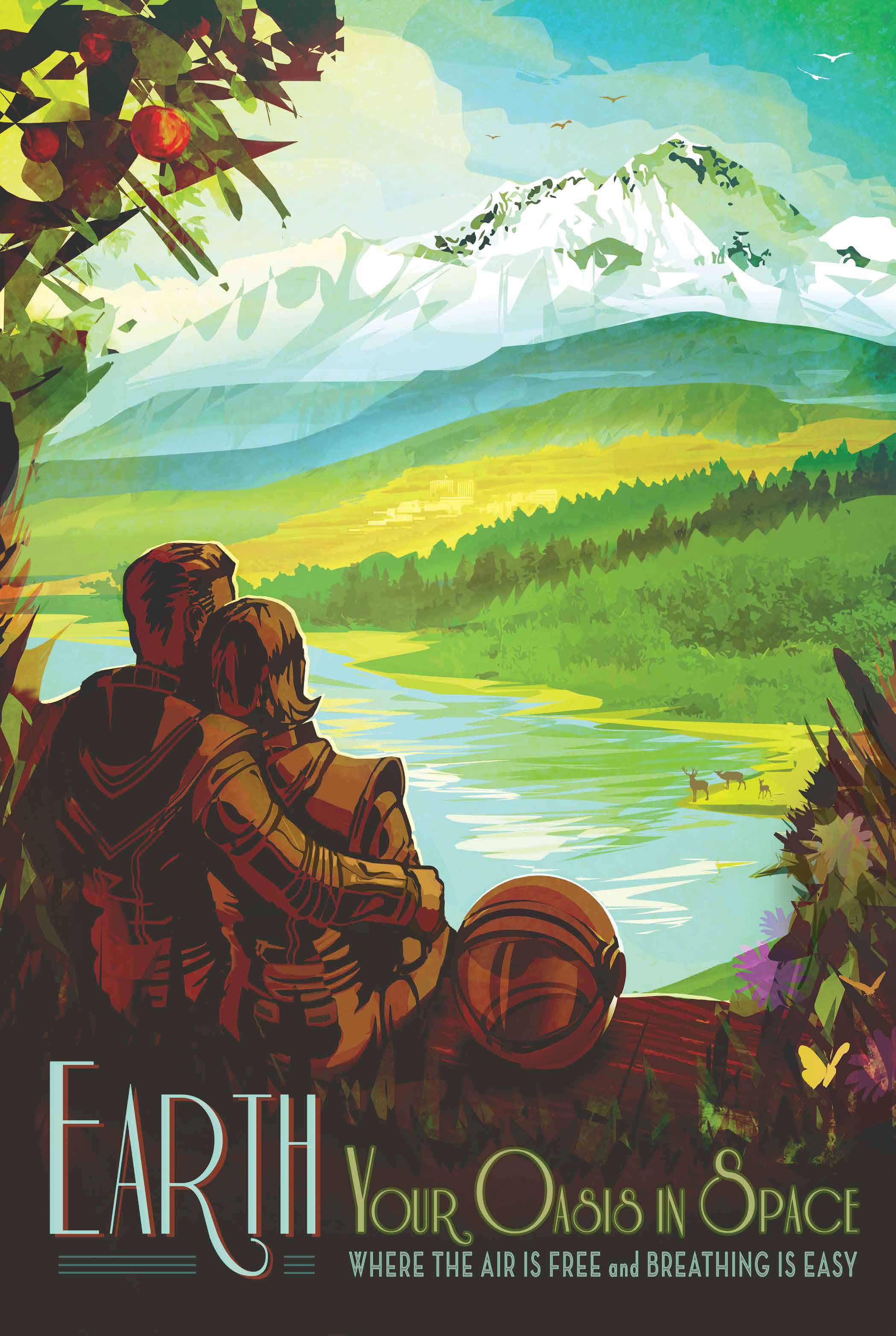
There's no place like home. Warm, wet and with an atmosphere that's just right, Earth is the only place we know of with life – and lots of it. JPL's Earth science missions monitor our home planet and how it's changing so it can continue to provide a safe haven as we reach deeper into the cosmos.
bounces radio waves and monitors the bounce backs and converts it into audio equivilent
Visit for more. Enveloping our planet and protecting us from the fury of the Sun is the magnetosphere, a key to helping Earth develop into a habitable planet.
Live meteor echoes at LIVEMETEORS.com
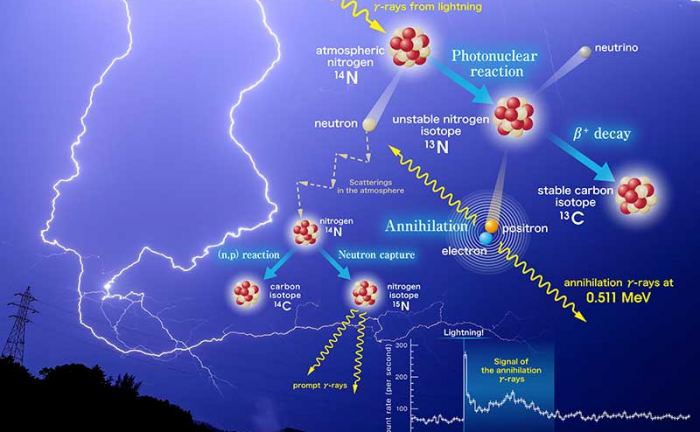
A Kyoto University-based team has unraveled the mystery of gamma-ray emission cascades caused by lightning strikes. Credit: Kyoto University/Teruaki Enoto
For some time, physicists have been aware that small bursts of high-energy gamma rays can be produced by lightning storms – what are known as “terrestrial gamma-ray flashes”. They are believed to be the result of static electrical fields accelerating electrons, which are then slowed by the atmosphere. This phenomenon was first discovered by space-based observatories, and rays of up to 100,000 electron volts (100 MeV) have been observed.
Thanks to the success of their campaign, the team built and installed particle detectors across the northwest coast of Honshu. In February of 2017, they installed four more detectors in Kashiwazaki city, which is a few hundred meters away from the neighboring town of Niigata. Immediately after the detectors were installed, a lightning strike took place in Niigata, and the team was able to study it.
It was here that things really got interesting. As the unstable nitrogen broke down, it released positrons that then collided with electrons, causing matter-antimatter annihilations that released more gamma rays. As Enoto explained, this demonstrated, for the first time that antimatter is something that can occur in nature due to common mechanisms.

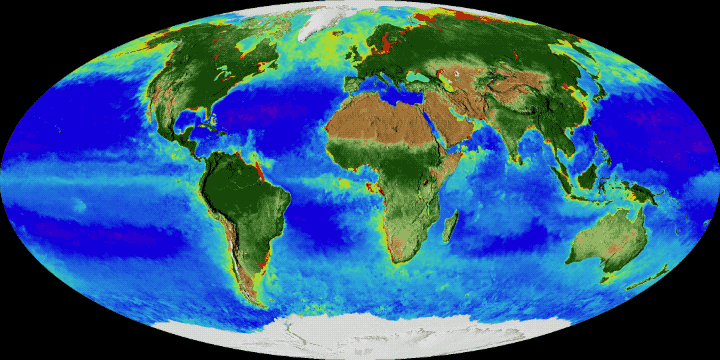
A NASA visualization shows 20 years of continuous satellite observations of plant life on land and at the ocean's surface from 1997 to 2017. Vegetation on land is represented on a scale from brown (low vegetation) to dark green (lots of vegetation). In the ocean, populations of phytoplankton are indicated on a scale from purple (low) to yellow (high). Credit: NASA
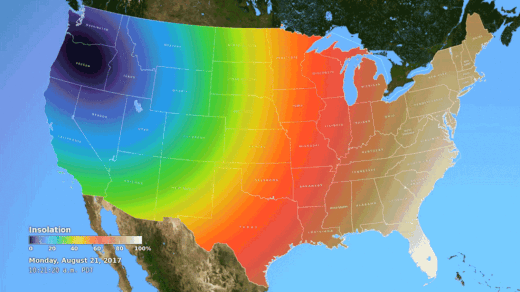
Image: The Moon’s shadow will dramatically affect insolation — the amount of sunlight reaching the ground — during the total solar eclipse. Credit: NASA’s Scientific Visualization Studio 160 seconds of totality is a fleeting but, so I’m told, haunting experience. For scientists, though, we’d like a good bit more. Thus it’s welcome news that the European Space Agency is working on Proba-3, a duo of small satellites designed to interact with each other to block the solar disk over and over again. The camera satellite and disk satellite engage in precision flying, creating artificial eclipses of six hours each time the two craft make one 19.6 hour orbit.
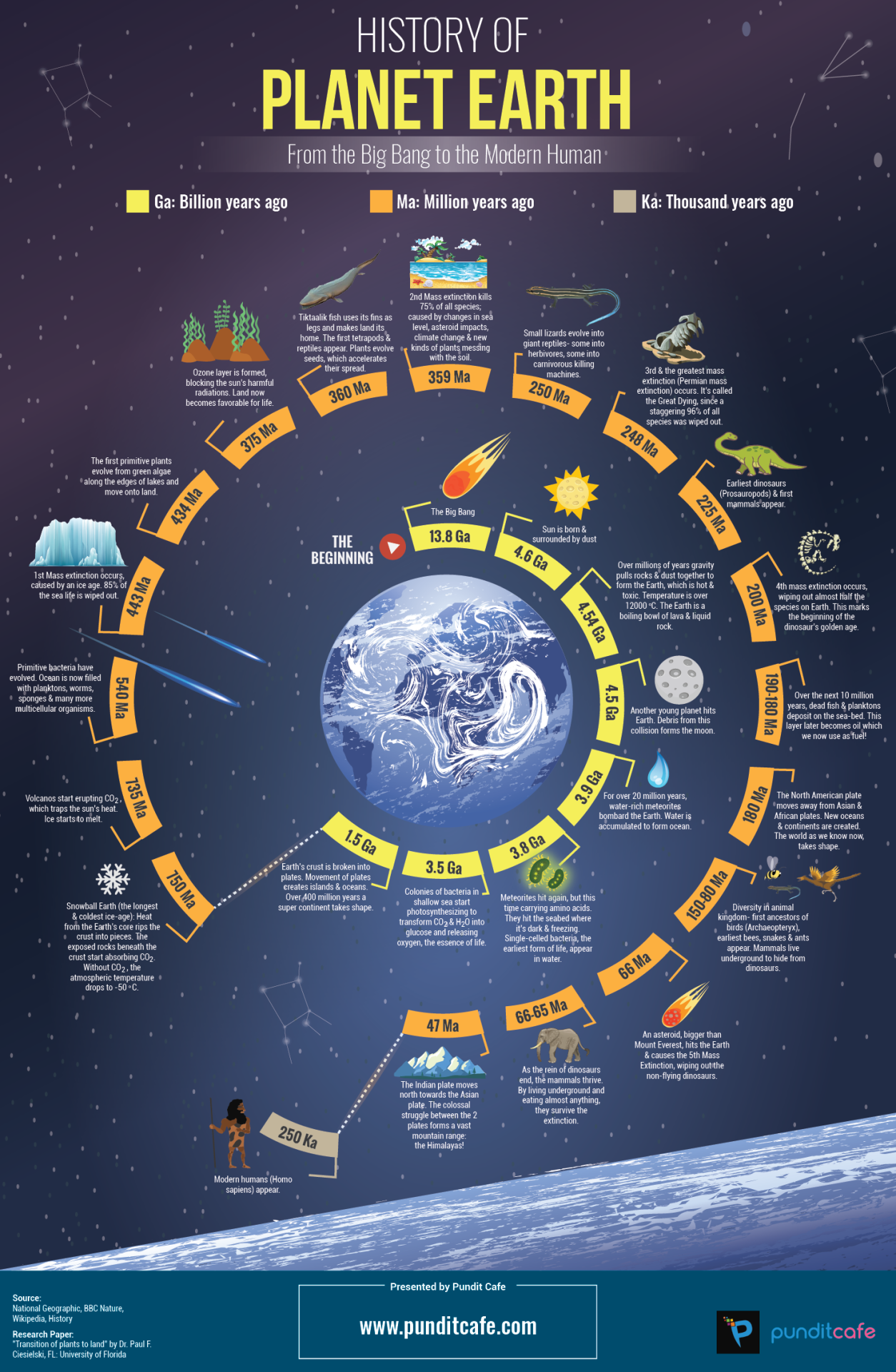

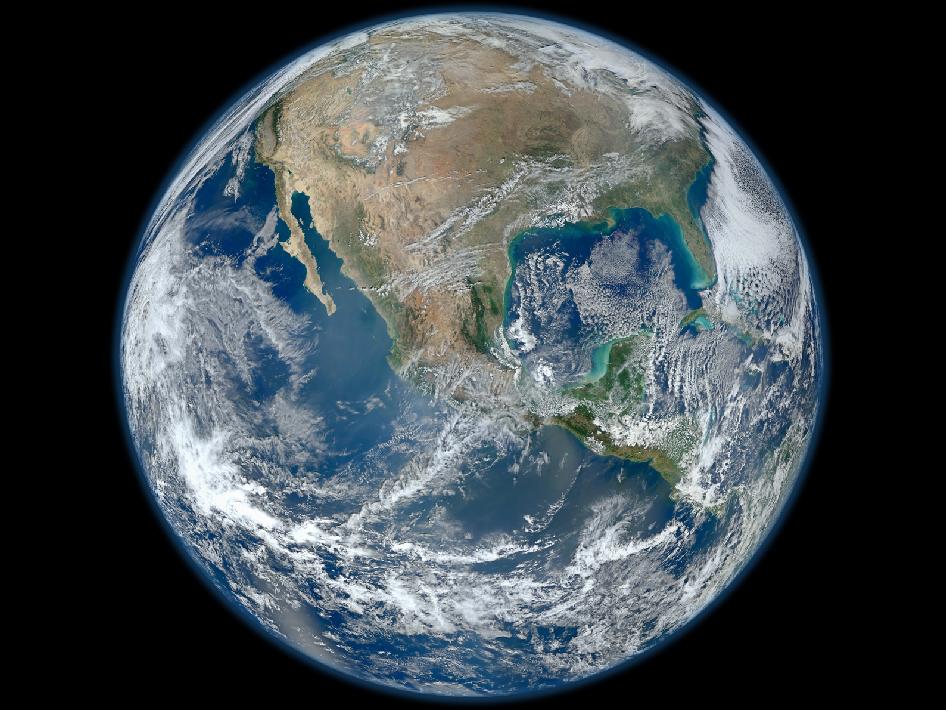
A Composite Image of the Earth
NASA has released new, high-definition satellite images of Earth's "night lights" for the first time since 2012. This composite image of the Earth as a "black marble" shows Asia and Australia in 2016.
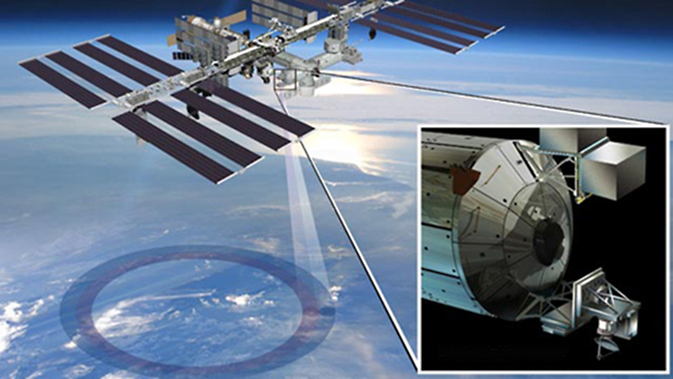
The first in a series of NASA Earth-observing instruments to be mounted on the exterior of the International Space Station
is scheduled for launch this month. ISS-RapidScat will monitor ocean winds for climate research, weather predictions and hurricane monitoring.
Image Credit: NASA.
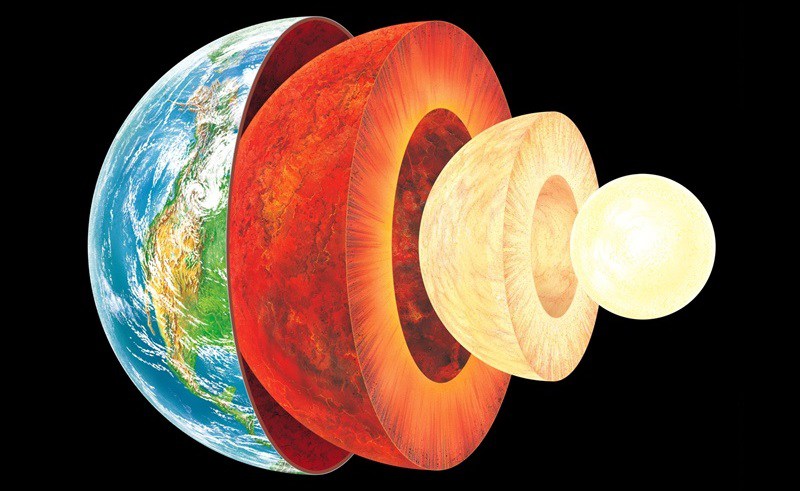
The Earth's layers, showing the Inner and Outer Core, the Mantle, and Crust.
Credit: Discover Magzine

This Mollweide projected data visualization shows 20 years of Earth's biosphere starting in September 1997 going through September 2017. Data for this visualization was collected from multiple satellites over the past twenty years. Category News & Politics License Standard YouTube License
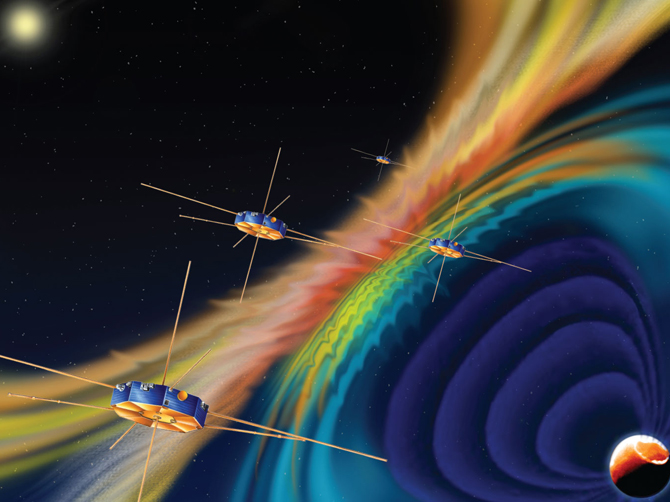
A colorful illustration shows the spacecraft of the Magnetospheric Multiscale Mission passing through the plasma of space. Credit: NASA
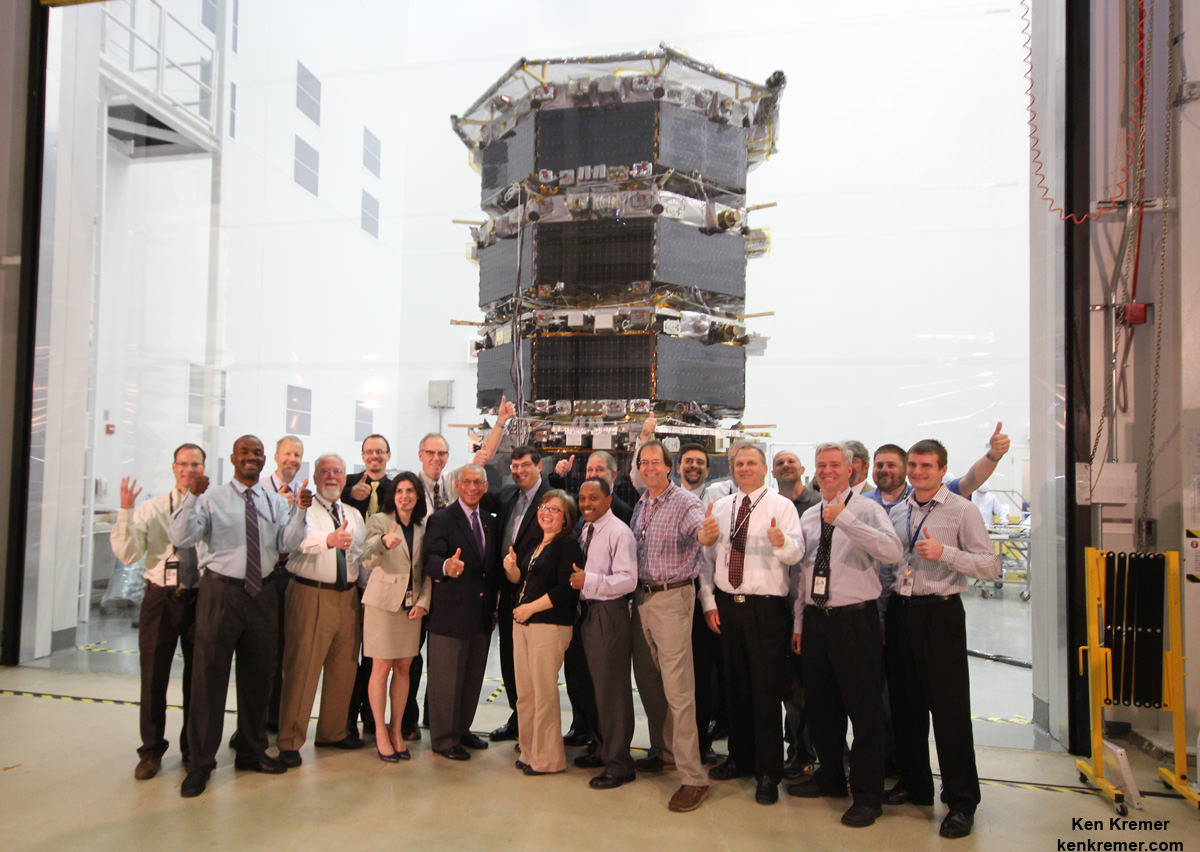
NASA Administrator Charles Bolden poses with the agency’s Magnetospheric Multiscale (MMS) spacecraft, mission personnel, Goddard Center Director Chris Scolese and NASA Associate Administrator John Grunsfeld, during visit to the cleanroom at NASA’s Goddard Space Flight Center in Greenbelt, Md., on May 12, 2014. Credit: Ken Kremer- Story updated[/caption]
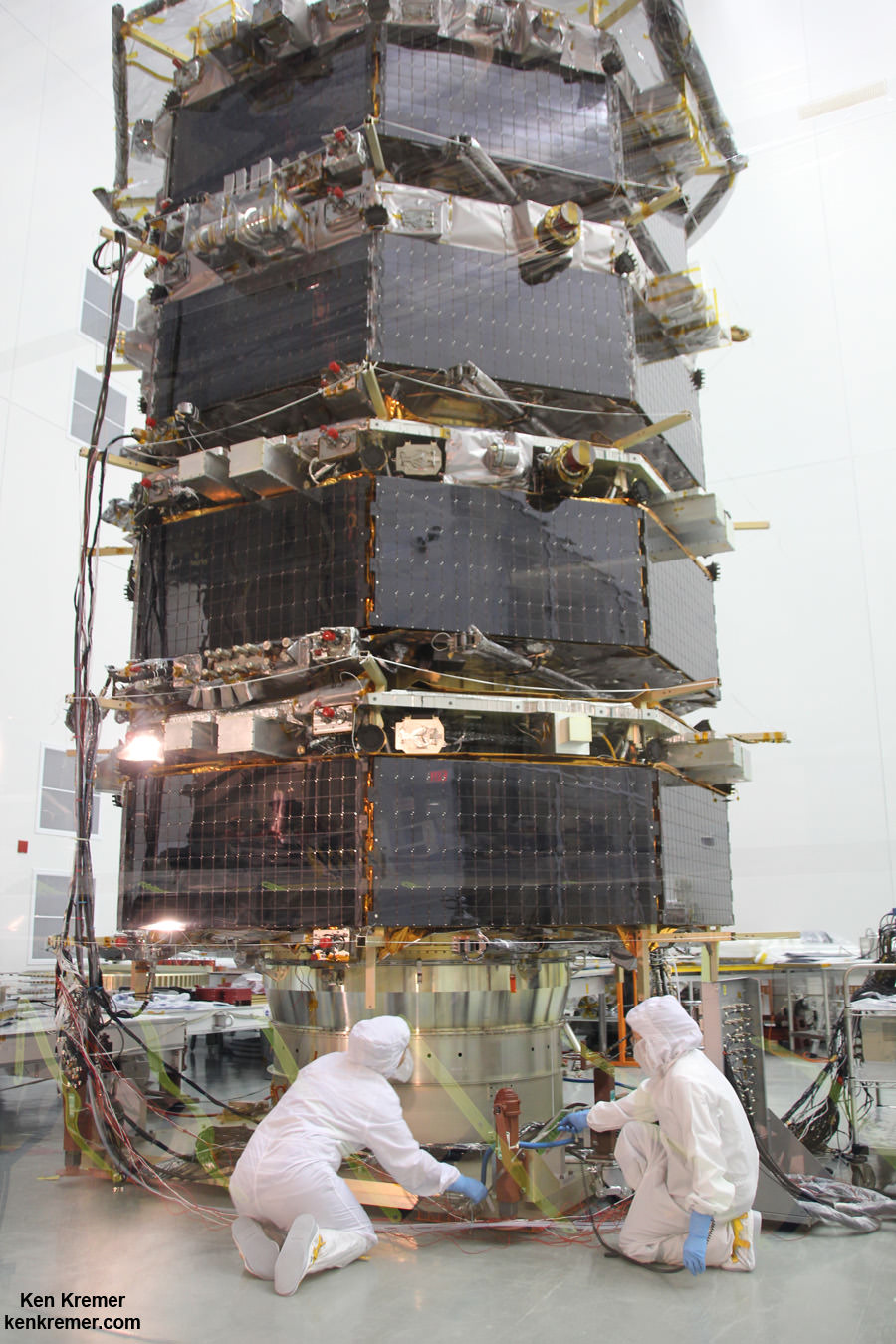
Technicians work on NASA’s 20-foot-tall Magnetospheric Multiscale (MMS) mated quartet of stacked observatories in the cleanroom at NASA’s Goddard Space Flight Center in Greenbelt, Md., on May 12, 2014. Credit: Ken Kremer-

NASA's Magnetospheric Multiscale (MMS) spacecraft has detected magnetic activity occurring in a new and surprising way in the environment of near-Earth space. Earth is surrounded by charged particles known as plasma. Most of these high-energy particles are deflected by the magnetosphere, which is the protective magnetic field that surrounds the planet. As Earth's magnetic-field lines absorb this energy, they stretch and eventually snap, releasing powerful bursts of particles toward Earth, which, in turn, can endanger satellites, spacecraft and astronauts in space. This process, known as magnetic reconnection, is commonly observed in Earth's magnetosphere, generally under calm conditions. However, new data from NASA's MMS has shown for the first time that this process also occurs in the extremely turbulent near-Earth environment known as the magnetosheath, according to a statement from NASA.
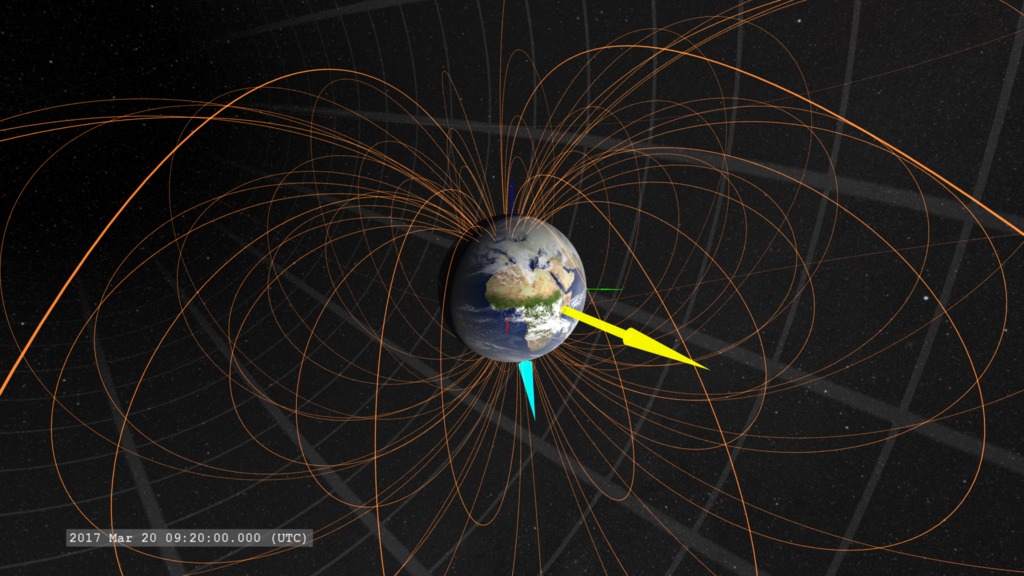
Electricity and magnetism have a lot in common. They are connected by the unified theory of electromagnetism, and are in many ways two sides of the same coin. Both can exert forces on charges and magnetic fields. A changing electric field creates a magnetic field and vice versa. Elementary particles can possess Eelectric and magnetic properties. But there is one fundamental difference.
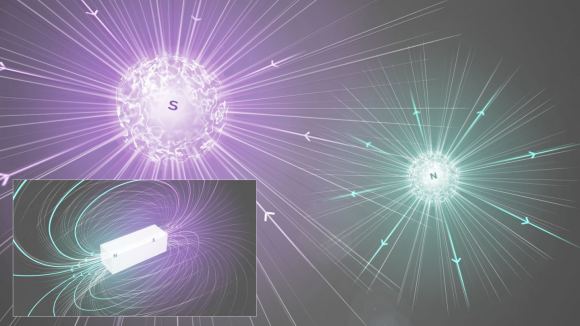
Monopoles would have only a north or south pole. Credit: Daniel Dominguez, CERN
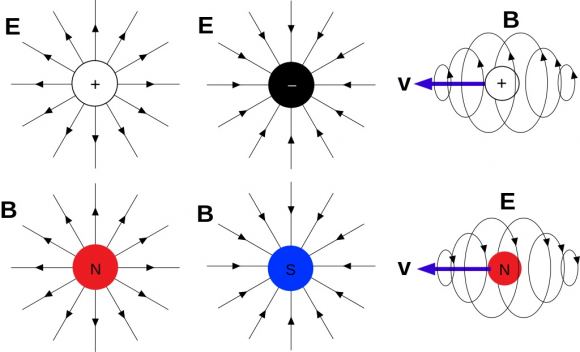
Monopoles would bring symmetry to electromagnetism. Credit: Wikipedia user Maschen
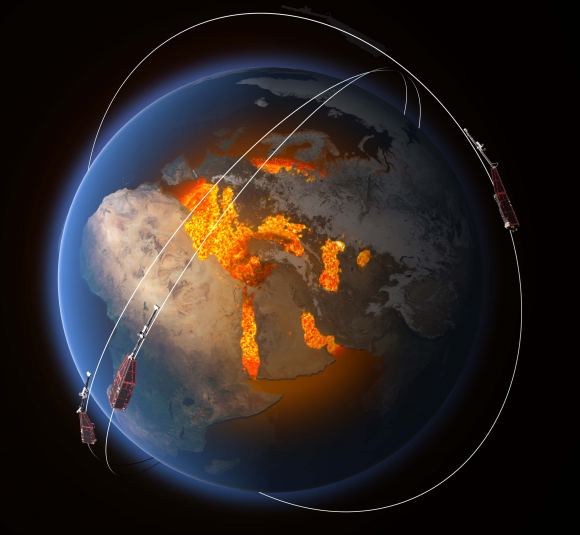
The Swarm constellation probes the magnetic field of Earth’s core. Credit: ESA/ATG Medialab
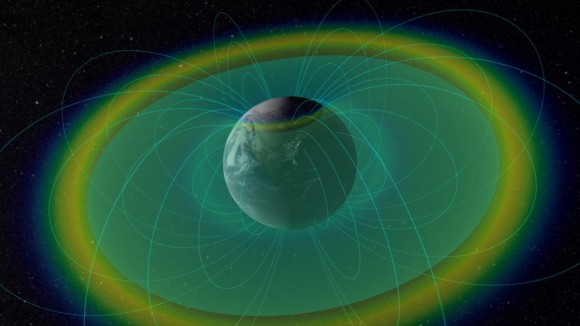
Visualization of the radiation belts with confined charged particles (blue & yellow) and plasmapause boundary (blue-green surface).
Credit: NASA/Goddard
It?s a well-known fact that Earth?s ozone layer protects us from a great deal of the Sun?s ultra-violet radiation.
Were it not for this protective barrier around our planet, chances are our surface would be similar to the rugged and lifeless landscape
we observe on Mars.
Beyond this barrier lies another ? a series of shields formed by a layer of energetic charged particles that are held in place by the
Earth?s magnetic field. Known as the Van Allen radiation belts, this wall prevents the fastest, most energetic electrons from reaching Earth.
Published on Feb 28, 2013 These two nearly identical spacecraft launched in August 2012 and with only six months in operation, they may well be rewriting science textbooks.
The probes study the Van Allen belts, gigantic radiation belts surrounding Earth, which can swell dramatically in response to incoming energy from the sun,
engulfing satellites and spacecraft and creating potential threats to manned space flight.
James Van Allen discovered the radiation belts during the 1958 launch of the first successful U.S. satellite. Subsequent missions have observed parts of the belts, but what causes the dynamic variation in the region has remained something of a mystery. This video is public domain and can be downloaded at:
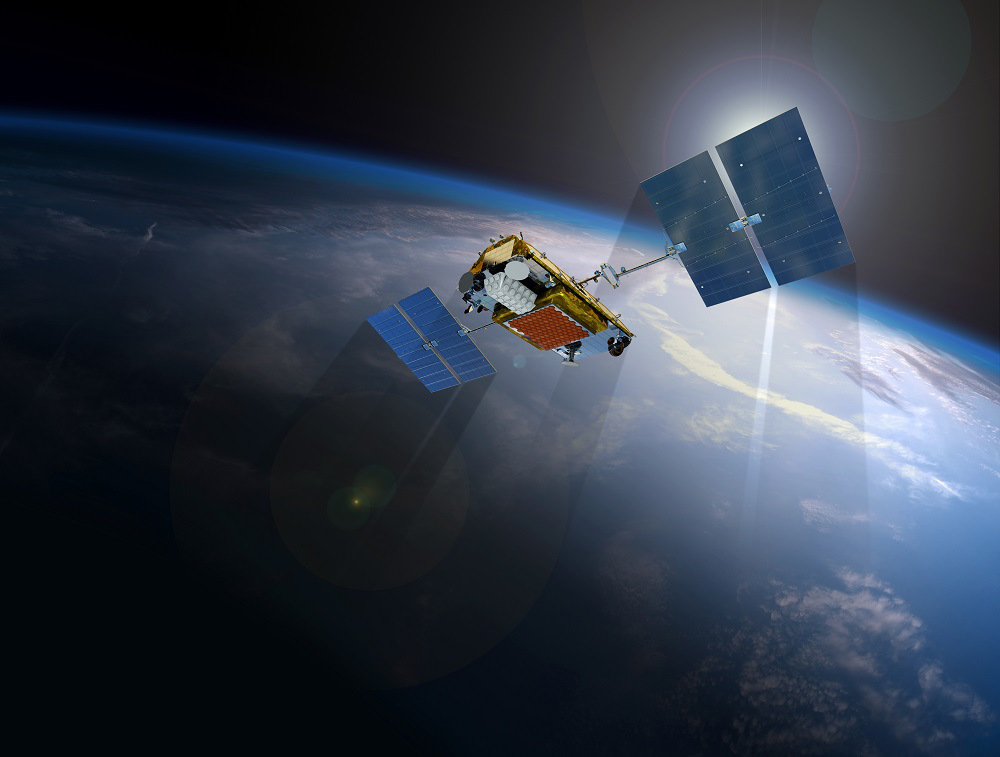
An artist’s conception of an Iridium-NEXT satellite in low Earth orbit. Image credit: Iridium Communications Inc.
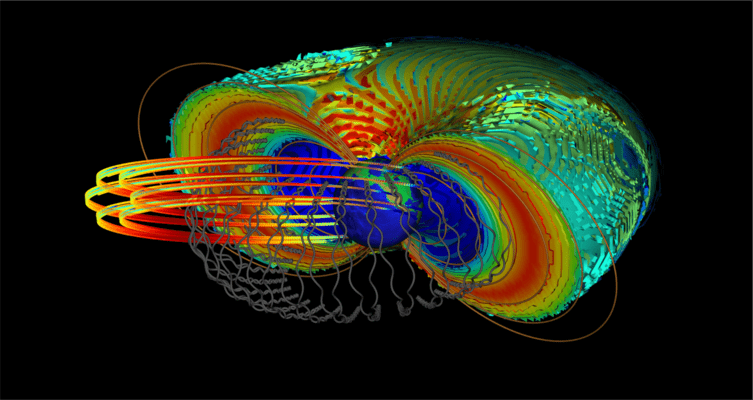
Electrons serve many purposes in physics. They are used by some particle accelerators and they underpin our modern world in the silicon chips that run the world’s computers. They’re also prevalent in space, where they can occasionally be seen floating around in a plasma in the magnetospheres of planets. Now, a team from the German Research Centre for Geosciences (GFZ) lead by Drs Hayley Allison and Yuri Shprits have discovered that those electrons present in the magnetosphere can be accelerated up to relativistic speeds, and that could potentially be hazardous to our increasing orbital infrastructure.
Space is our future, but space is also a deadly place, with poisonous radiation and an increased risk of cancer. We’re protected here on Earth thanks to our planet’s magnetosphere, but is there a way to create an artificial magnetosphere and shield astronauts? Universetoday's you tube channel Sign up to my weekly email newsletter: Support us at:Support us at: Follow us on Tumblr: More stories at Follow us on Twitter: @universetoday Like us on Facebook: Instagram - / Team: Fraser Cain - @fcain /Karla Thompson - @karlaii Chad Weber - Chloe Cain - Instagram: @chloegwen2001 Music: Left Spine Down - “X-Ray” Team: Fraser Cain - @fcain / frasercain@gmail.com Karla Thompson - @karlaii / Chad Weber - weber.chad@gmail.com Chloe Cain - Instagram: @chloegwen2001
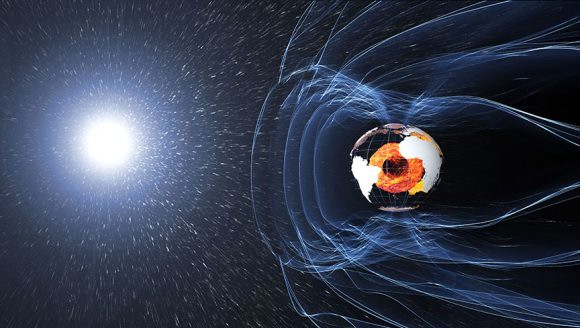
The magnetic field and electric currents in and around Earth generate complex forces that have immeasurable impact on every day life. Credit: ESA/ATG medialab
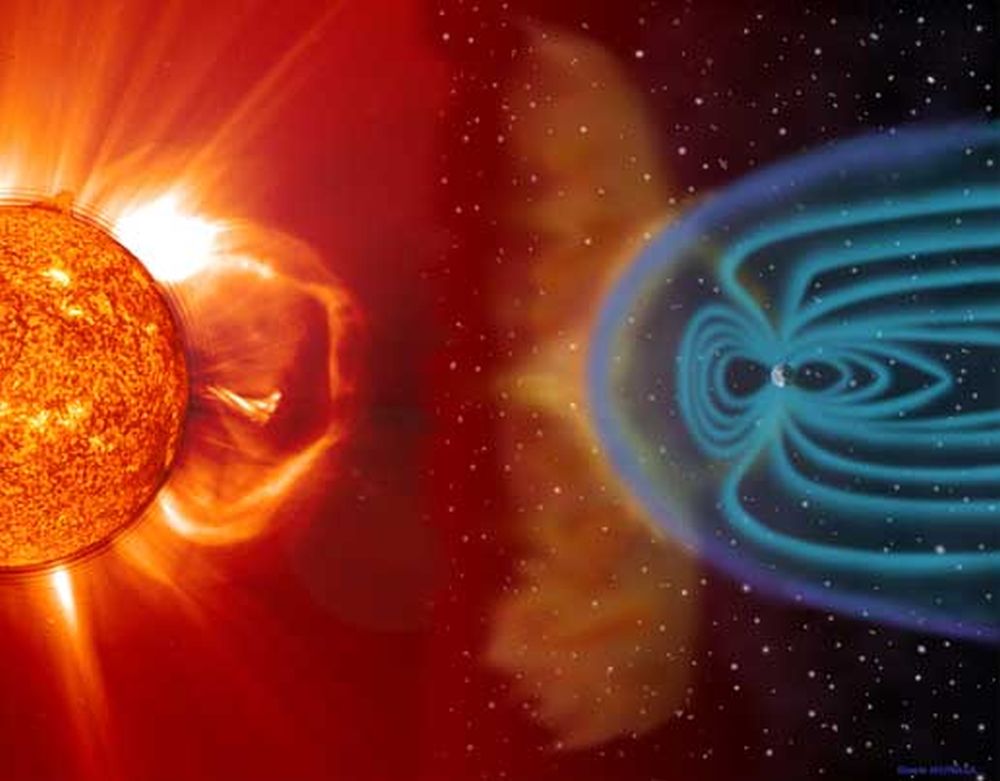
Exactly how dangerous are solar storms? Scientists think the Carrington Event was one of the most powerful ones to ever hit Earth. They also think that storms that powerful only happen every couple centuries or so. But a new study says we can expect more storms equally as strong, and more often.

Sun with a huge coronal mass ejection. Usually the Sun’s magnetic field lines contain the plasma, but sometimes the lines break and the plasma is ejected. Image credit: NASA
On August 31, 2012 a long filament of solar material that had been hovering in the sun's atmosphere, the corona, erupted out into space at 4:36 p.m. EDT. The coronal mass ejection, or CME, traveled away from the sun at over 900 miles per second. This movie shows the ejection from a variety of viewpoints as captured by NASA's Solar Dynamics Observatory (SDO), NASA's Solar Terrestrial Relations Observatory (STEREO), and the joint ESA/NASA Solar Heliospheric Observatory (SOHO). This video is public domain and can be downloaded at: Like our videos? Subscribe to NASA's Goddard Shorts HD podcast: Or find NASA Goddard Space Flight Center on Facebook: Or find us on Twitter:

These drawings were made by Richard Carrington, the amateur English astronomer which the Carrington Event is named after. His observations helped show the existence of solar flares. The top drawing is the entire solar disc and the bottom is the sunspot that generated the strongest white-light flares. These drawings are reversed from the originals. Image Credit: Royal Astronomical Society.
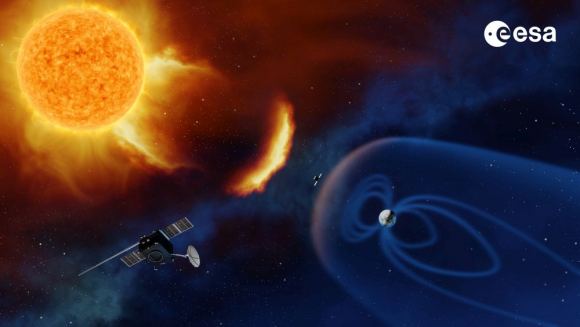
The ESA is considering a LaGrange Mission which would give us more advance notice of dangerous CMEs. Image Credit: ESA/A. Baker, CC BY-SA 3.0 IGO
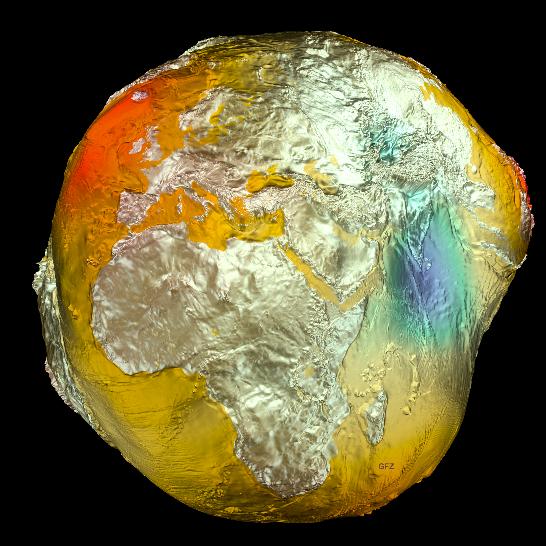
The Earth?s gravitational model (aka the ?Potsdam Potato?) is based on data from the
LAGEOS, GRACE, and GOCE satellites and surface data. Credit: GFZ
People tend to think of gravity here on Earth as a uniform and consistent thing. Stand anywhere on the globe,
at any time of year, and you?ll feel the same downward pull of a single G. But in fact, Earth?s gravitational field is subject
to variations that occur over time. This is due to a combination of factors, such as the uneven distributions of mass in the oceans,
continents, and deep interior, as well as climate-related variables like the water balance of continents, and the melting or growing of glaciers.
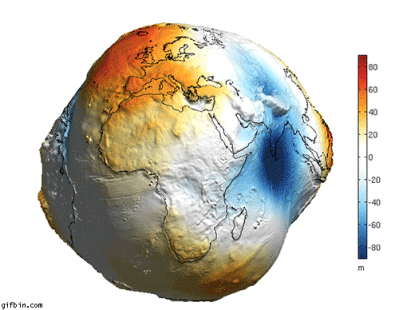
The Earth is lumpy. This is a map of Earth’s gravitational field. High areas, colored red, indicate areas where gravity
is slightly stronger than usual, while in blue areas gravity is slightly weaker.
The above map was made in 2005: a more recent and improved version was produced in 2011.
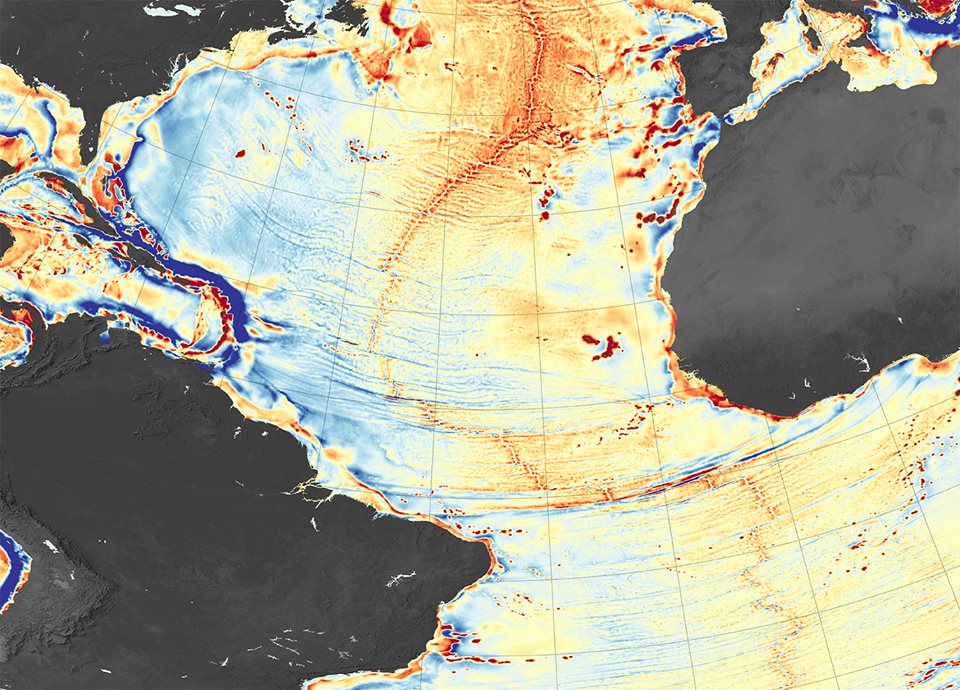
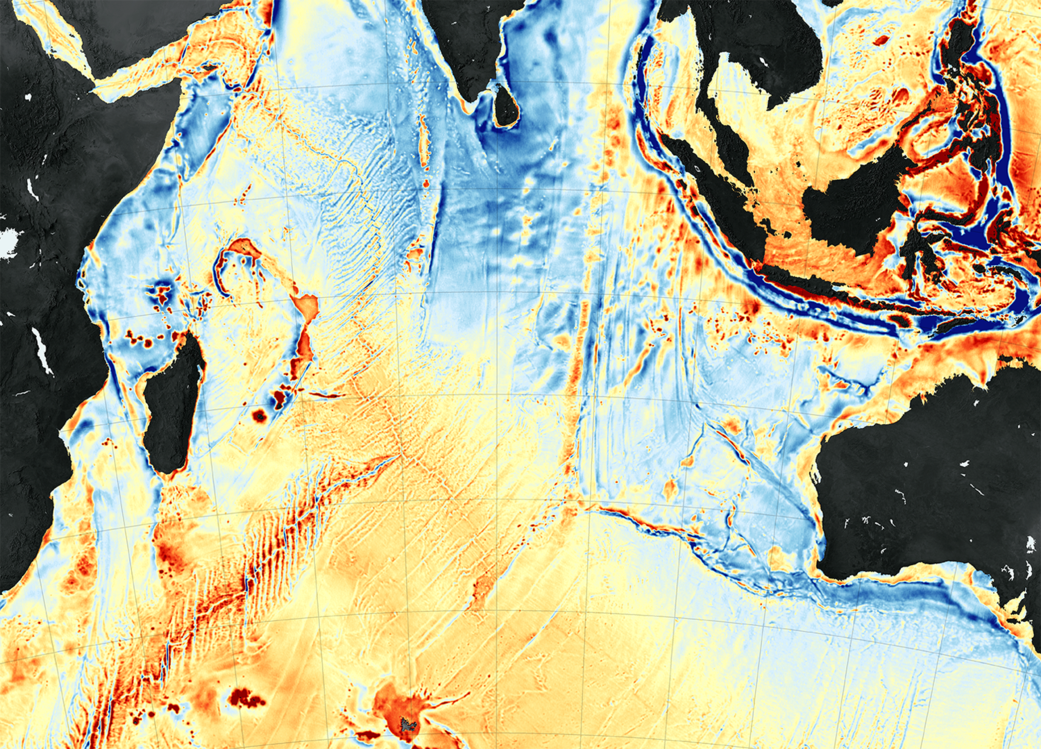
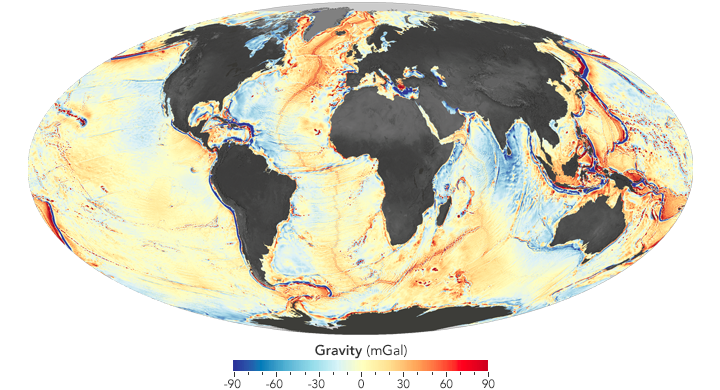
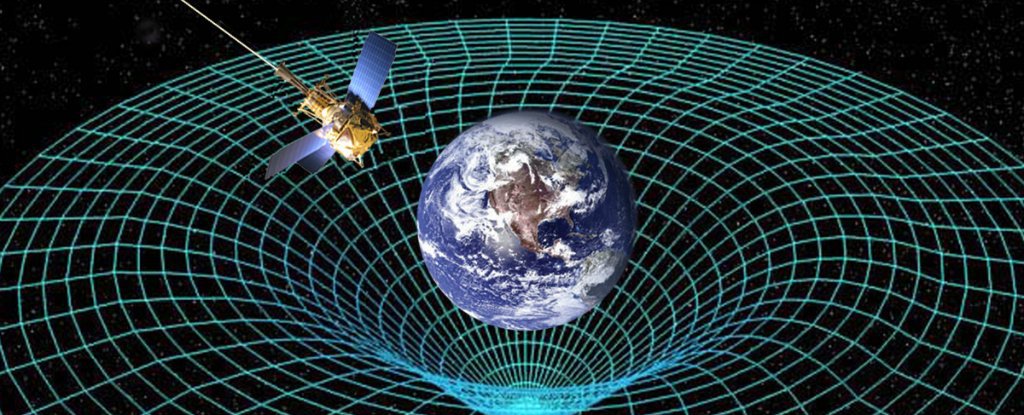
Artist’s impression of the effect Earth’s gravity has on spacetime. Credit: NASA
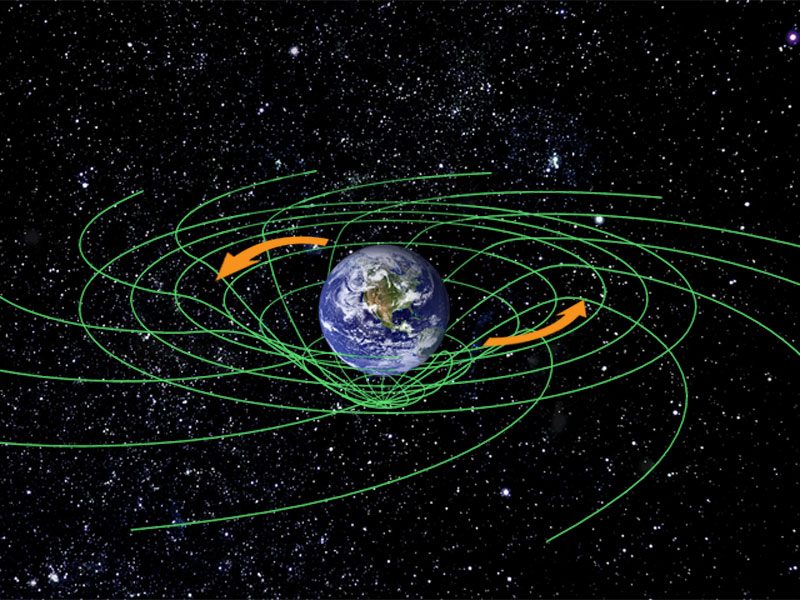
Artist’s impression of the frame-dragging effect in which space and time are dragged around a massive body. Credit:
Credit NASA
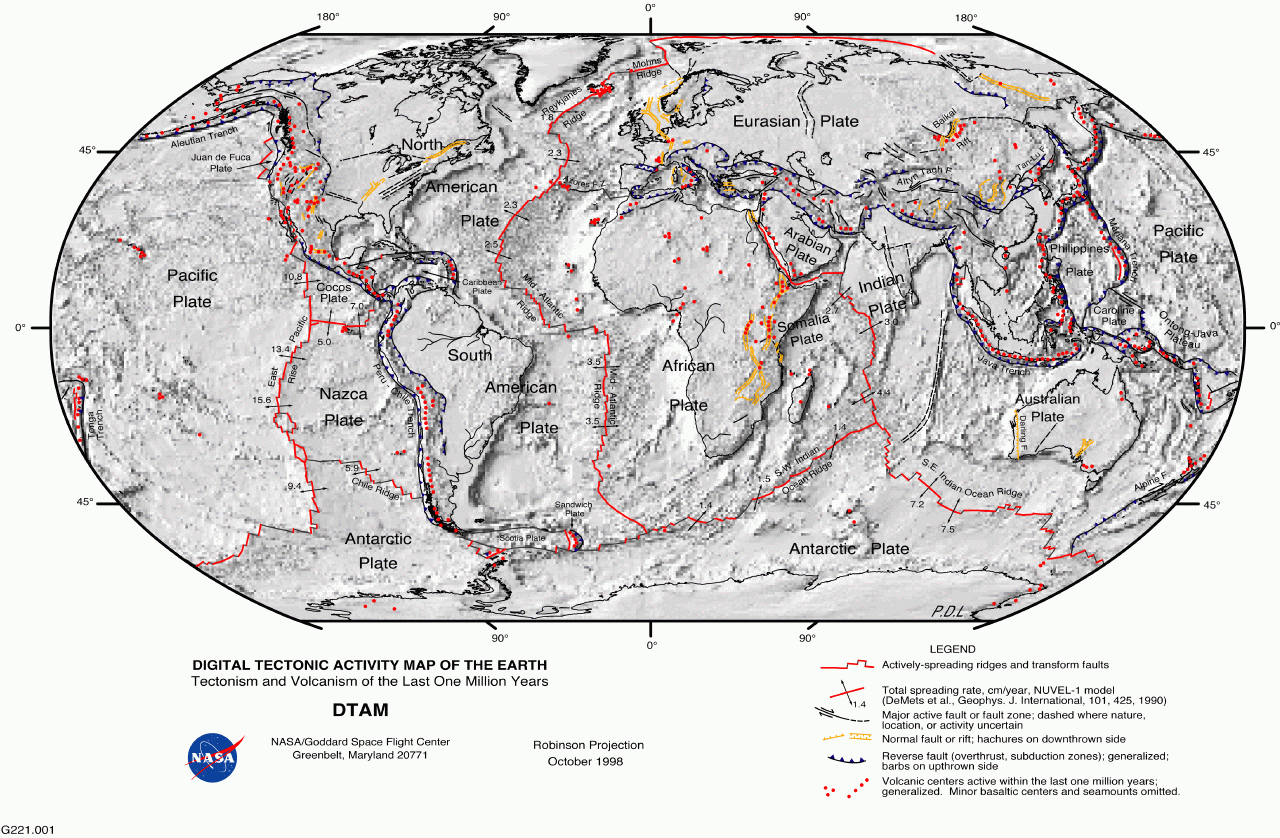
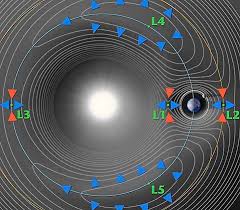
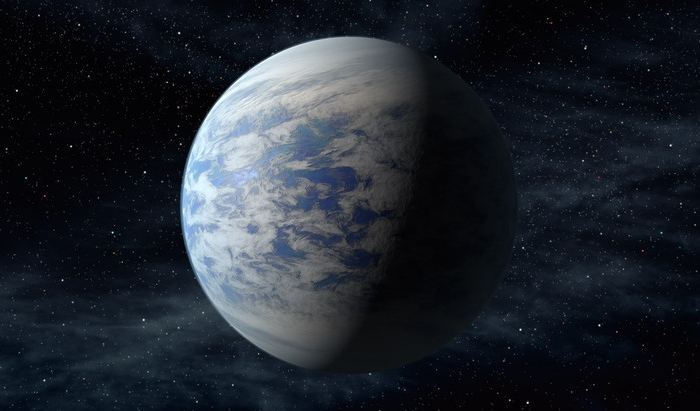
Artist's concept of Kepler-69c, a super-Earth-size planet in the habitable zone of a star like our sun, located about 2,700 light-years from Earth in the constellation Cygnus. Credit: NASA
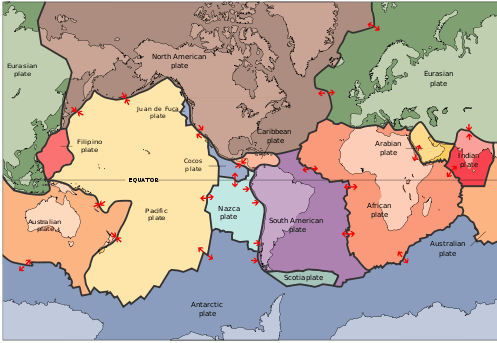
The Earth’s Tectonic Plates. Credit:
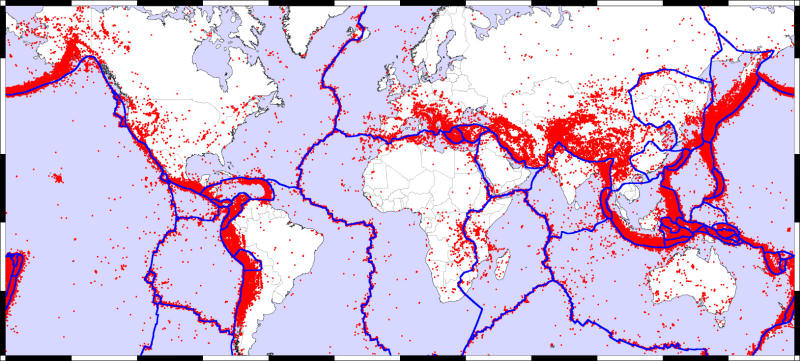
Map of the Earth showing fault lines (blue) and zones of volcanic activity (red). Credit:
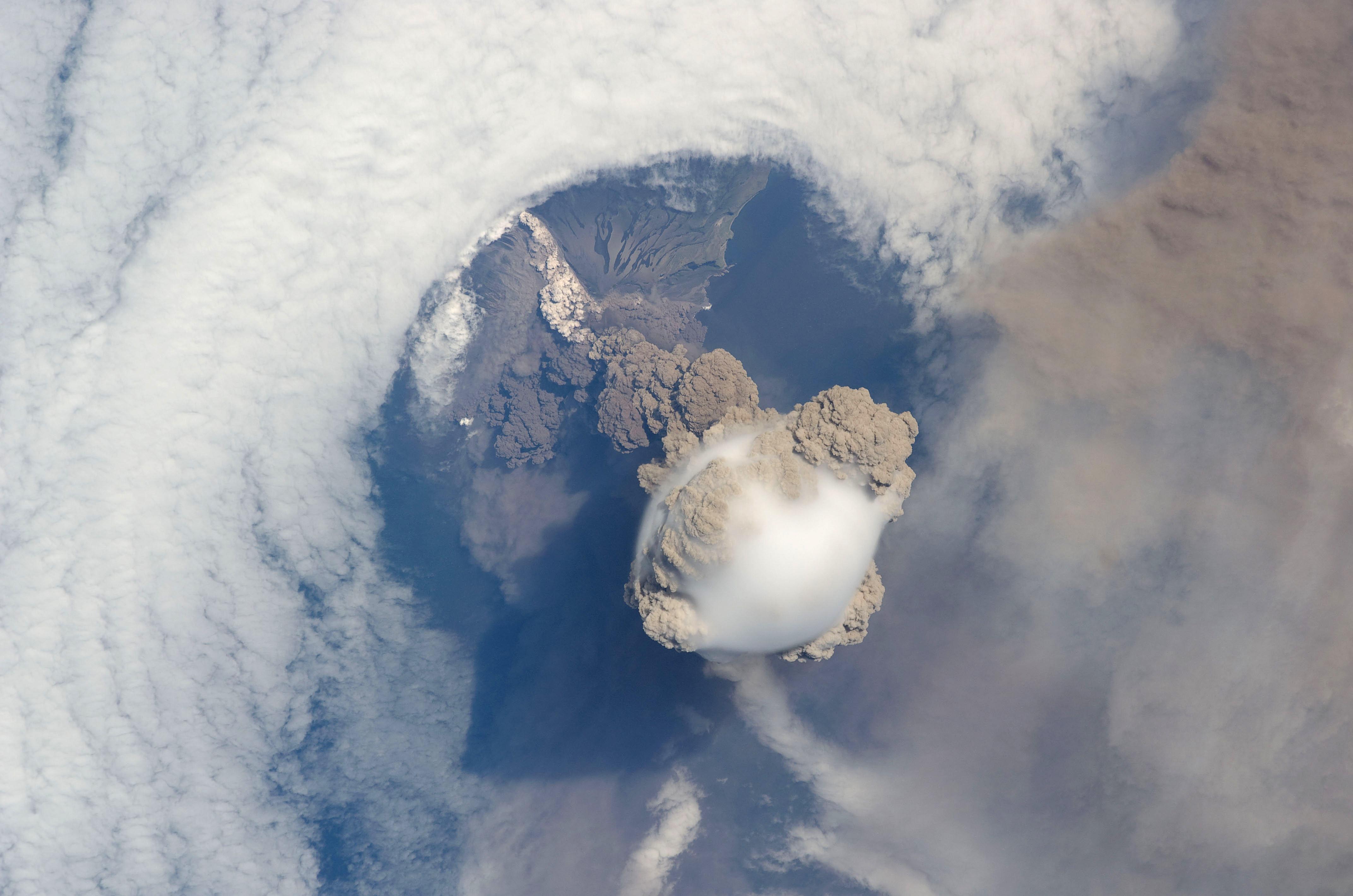
Image of the Sarychev volcano (in Russia’s Kuril Islands) caught during an early stage of eruption on June 12, 2009. Taken by astronauts aboard the International Space Station. Credit: NASA
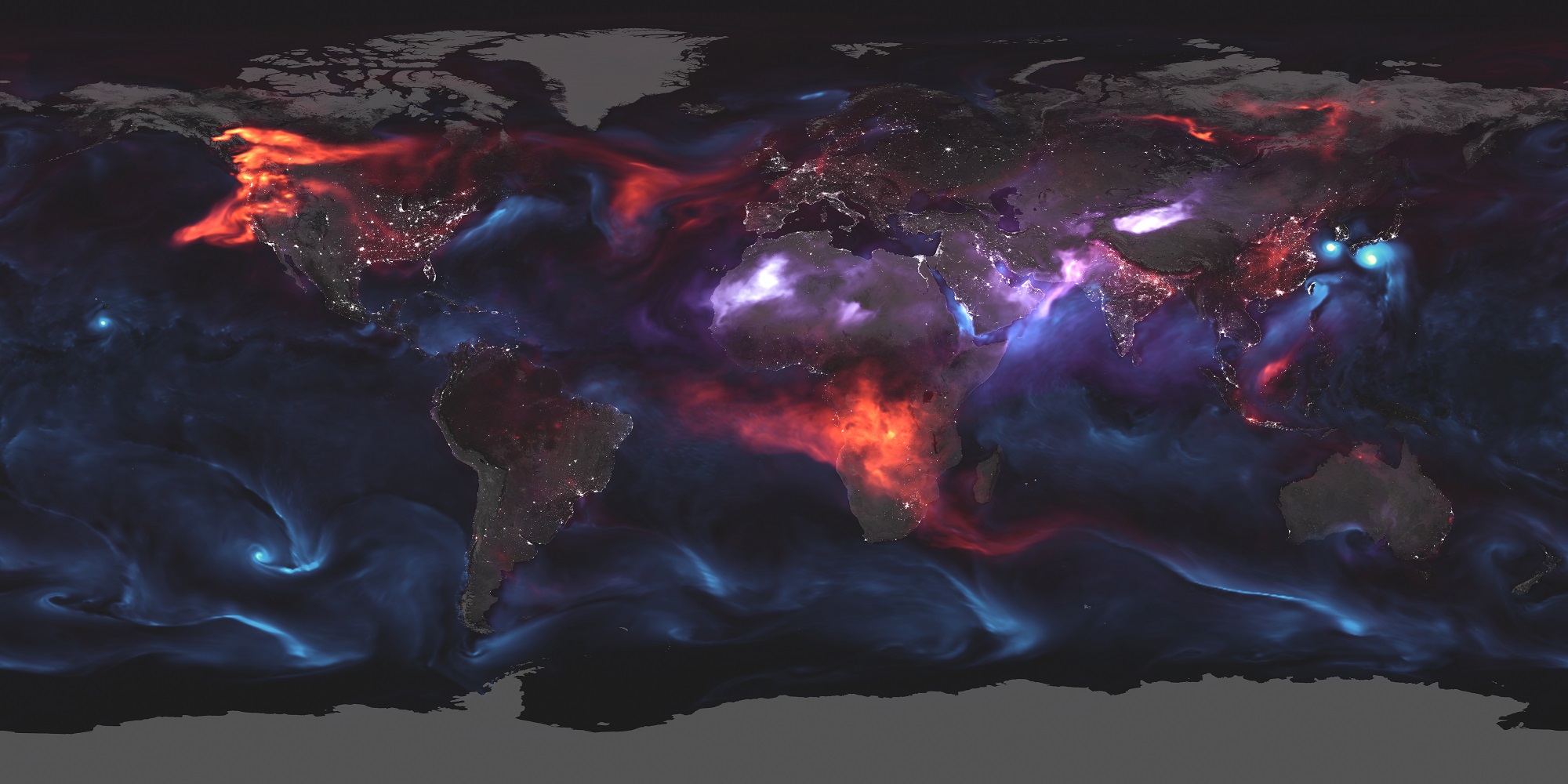
Look at all the Aerosols Pushed into the Atmosphere, from Fires, Volcanoes and Pollution. Even Sea Salt Thrown into the Air from Hurricanes AUGUST 28, 2018 BY MATT WILLIAMS
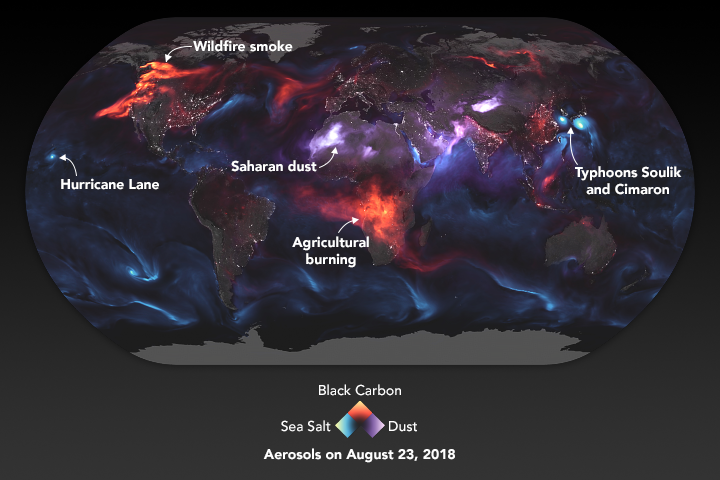
Annotated version of the visualization produced with the Goddard Earth the Observing System Forward Processing (GEOS FP) model. Credit: NASA/Joshua Stevens/Adam Voiland
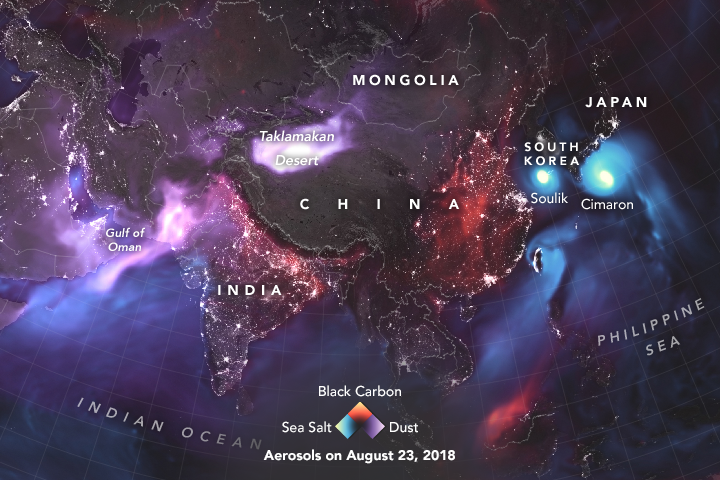
Annoted visual produced from the Goddard Earth the Observing System Forward Processing (GEOS FP) model showing a close-up of Asia. Credit: NASA/Joshua Stevens/Adam Voiland
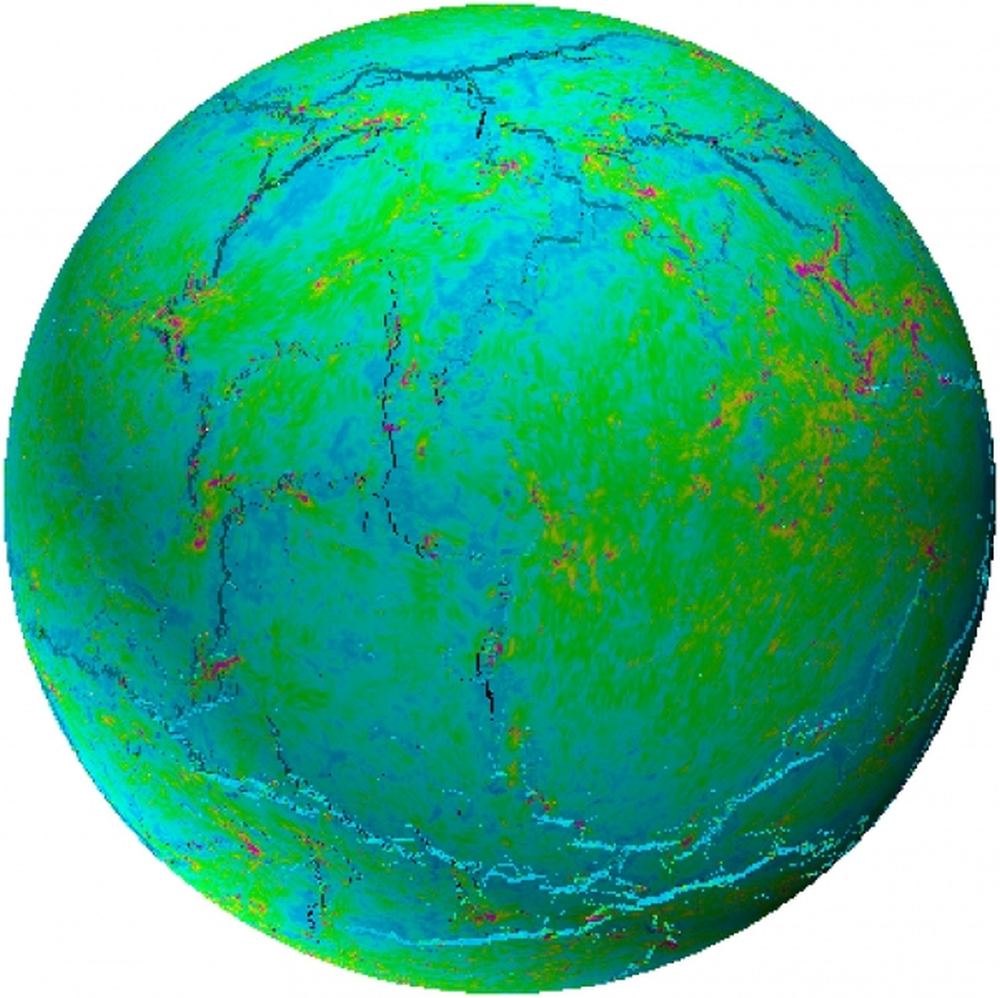
A snapshot of a model from the new work, showing the late stages of growth and coalescence of a new global fracture network. Fractures are in black / shadow, and colors show stresses (pink color denotes tensile stress, blue color denotes compressive stress). Image Credit: Tang et al, 2020.
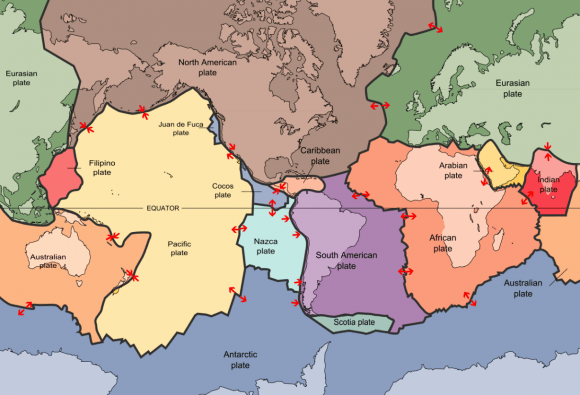
A graphic of the Earth’s largest tectonic plates. Image Credit: By Map: USGSDescription:Scott Nash – This file was derived from: Tectonic plates.png, Public Domain,wikipedia
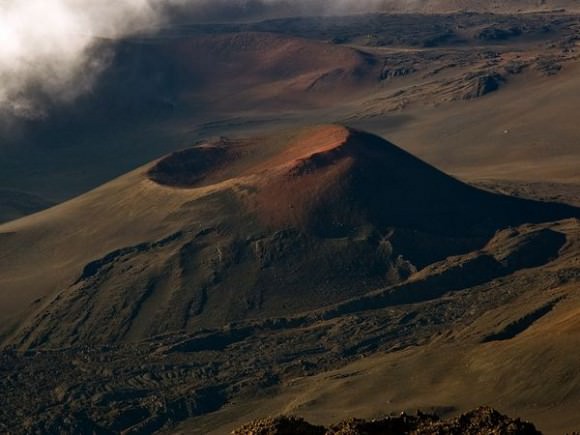
Haleakala, a giant shield volcano, forms the eastern bulwark of the island of Maui. In Earth’s deep past, periods of increased volcanism would’ve helped the Earth cool, like a radiation releasing steam. Credit: National Geographic/Cathy Roberts
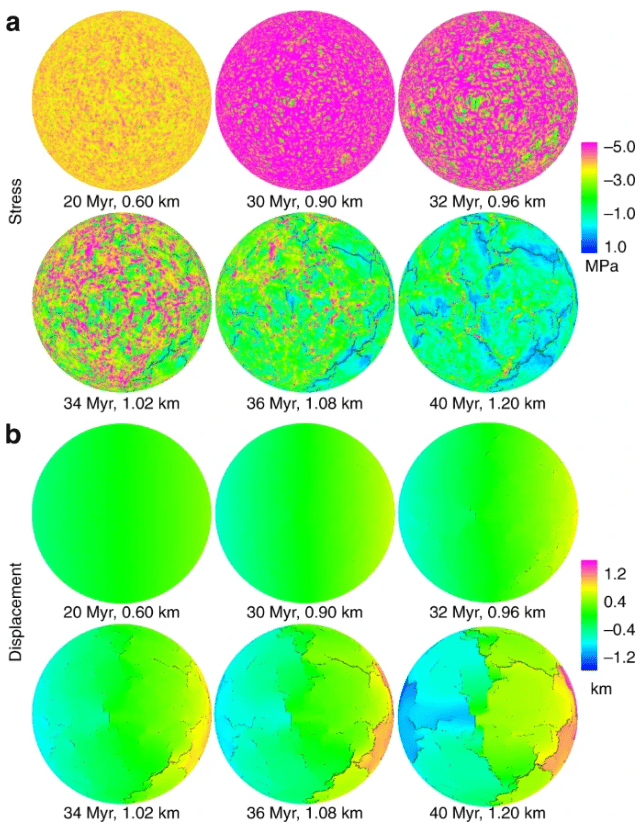
This figure from the study shows the development of a global system of fracturing. The top panel of six illustrated globes shows the global distribution of stress magnitudes over time, with negative values showing tensile stress, and positive values showing compressive stress. The bottom panel of six globes shows the associated displacement. For more detail, visit the study. Image Credit: Tang et al, 2020.
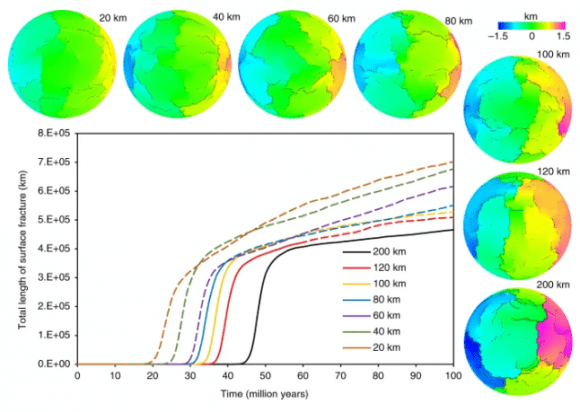
This figure from the study shows fracture development over time across shells with various thicknesses. The team modeled shells with thicknesses ranging from only 20 km up to 200 km. Image Credit: Tang et al, 2020.
Geologists think they’ve found the oldest Earth rock ever seen. And they found it in one of the last places you’d ever suspect, on the Moon. When the Apollo 14 astronauts returned their lunar samples back to Earth, they were carrying one rock that had formed on Earth 4 to 4.1 billion years ago, which was carved out of our planet during the time of intense bombardment and delivered to the Moon. Audio Podcast version: ITunes: RSS: Video Podcast version: ITunes: RSS: Sign up to my weekly email newsletter: Support us at:Support us at: Follow us on Tumblr: More stories at Follow us on Twitter: @universetoday Like us on Facebook: Instagram - Team: Fraser Cain - @fcain / frasercain@gmail.com /Karla Thompson - @karlaii Chad Weber -
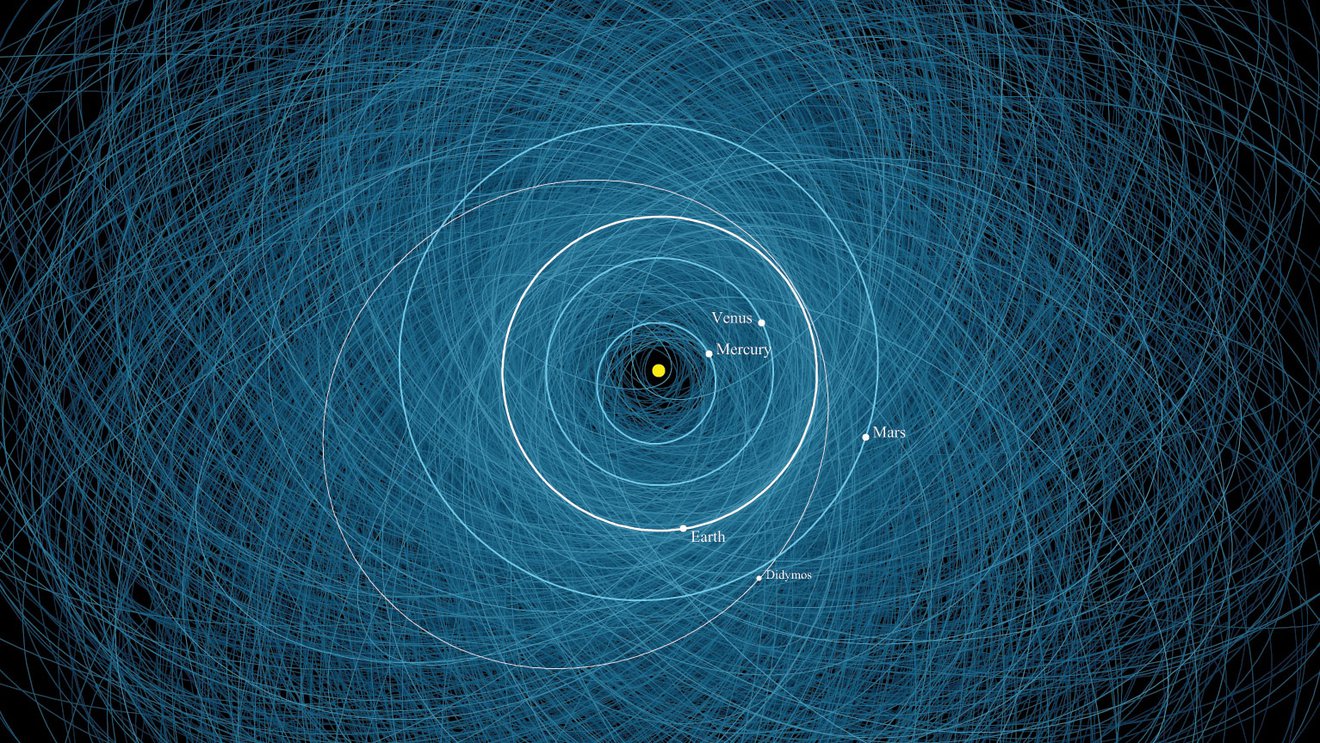
But, there’s a little chaos and unpredictability throughout nature, and asteroids are no exception. There are also some tiny uncertainties in asteroids’ positions. There’s no room for carelessness when you only have one planetary home.
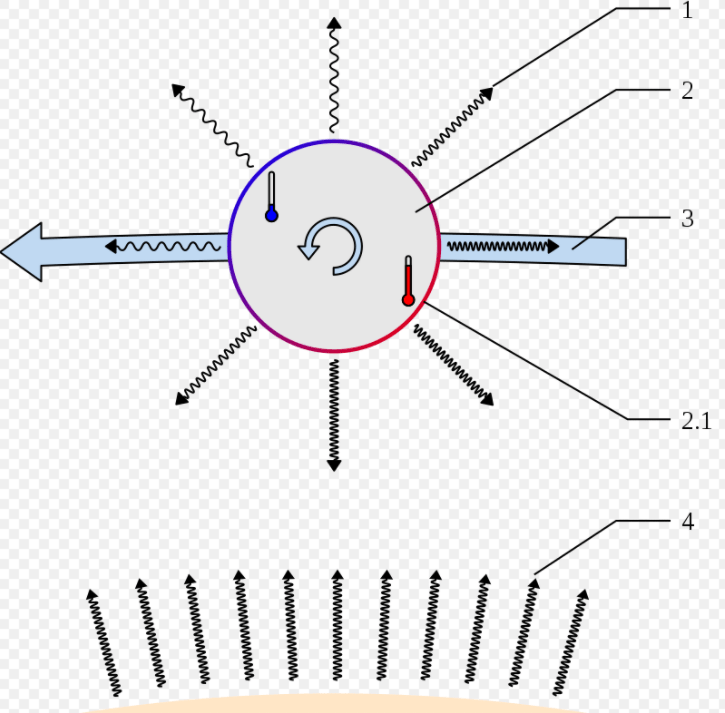
This illustration explains the Yarkovsky effect. The Yarkovsky effect can alter the orbit of smaller NEOs. Image Credit: By Graevemoore at English Wikipedia, CC BY-SA 3.0,
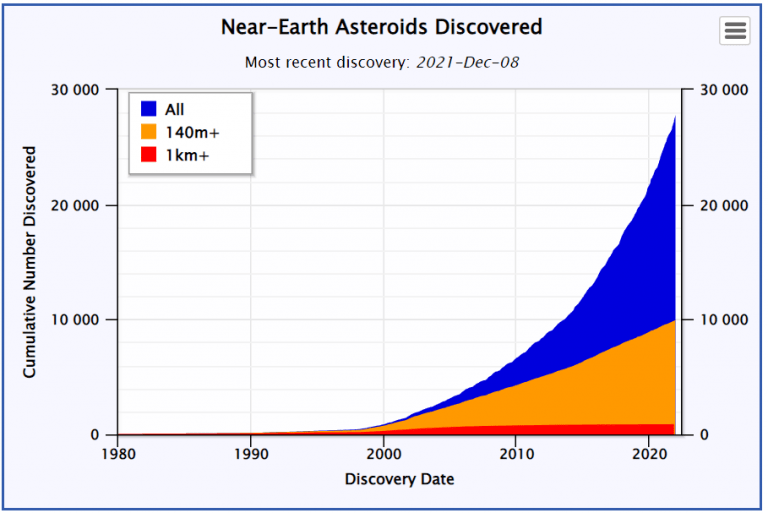
This chart from CNEOS shows the cumulative number of known Near-Earth Asteroids (NEAs) versus time. It shows totals for NEAs of all sizes, those NEAs larger than ~140m in diameter and those larger than ~1km in diameter. The dramatic rise in detections in the last two decades is likely to continue as the NEO Surveyor and the Vera C. Rubin facilities start operating. Image Credit: CNEOS
This animation shows an example of how the uncertainties in a near-Earth asteroid’s orbit can evolve with time. After such an asteroid’s close encounter with Earth, the uncertainty region becomes larger, making the possibility of future impacts more challenging to assess. Credit: NASA/JPL-Caltech

Image of some spectacular auroras in Finland. Credit – Seppo Fagerlund
Research website: Research paper published in The 19th International Congress of Sound and Vibration, At Vilnius, Lithuania 2012. 19th International Congress on Sound and Vibration 2012 (PDF) INFO: This eight second video is extracted from a set of test recordings that have been collected within the Auroral Acoustics project (2000-2012). During this time period high-quality audio recordings were made during approximately 100 geomagnetically opportune nights at different locations in Finland. These recordings form a database that is half a terabyte in size. This short clip has been selected from some video recording experiments that were performed during some nights simultaneously and independently of the main activities. Even though this video was recorded in 2004, the clap sound (at 8 and 31 seconds) was discovered only in May 2012 when the material was copied from DV tapes to disc. This is the first time during our project history when a clap sound has been recorded simultaneously with three different microphones. Due to the experimental nature of this material, it may not be useful for scientific analysis. However, we were lucky to encounter a similar situation again in September 2011. Three microphones registered similar clap sounds and now the developed methodology allowed for a closer analysis of the data. It produced a surprising result: the sound source was geometrically calculated to be in the open sky about 70 meters above the ground. A preliminary report of this phenomenon has been presented in the ICSV19 proceedings (Vilnius, Lithuania, July 8-12 2012), The result opens up a new phase in the Auroral Acoustics project. In order to celebrate this finding and to evoke discussion on the topic -- before the 2013 solar max -- we made a decision to publish this short video clip. Also, with this experimental video, the authors would like to thank the audience in Finland for their auroral sounds observation reports that now number over 300 cases with the most recent ones made during the spring of 2012. Video by: Unto K. Laine and Aalto University Communications / Mikko Raskinen
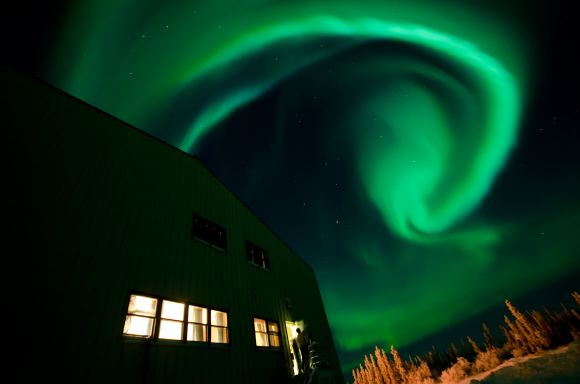
Spectacular image of a swirling aurora in the night sky. Credit – Jason Ahrns
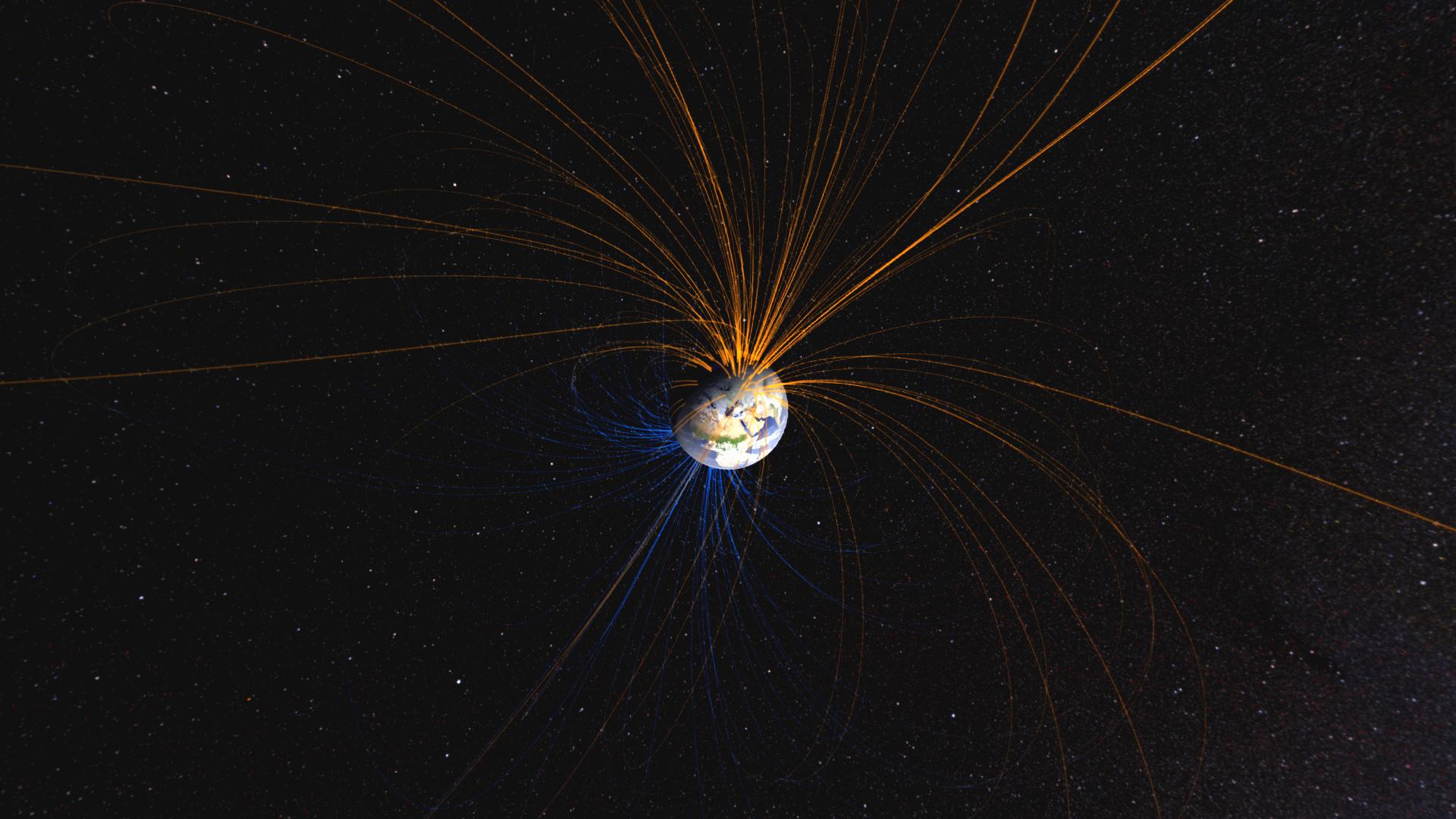
Visual simulation of the Earth's magnetic field. Credit:NASA Goddard Space Flight Center
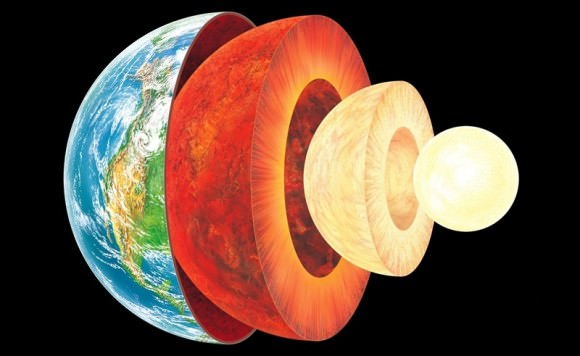
The Earth’s layers, showing the Inner and Outer Core, the Mantle, and Crust. Credit: discovermagazine.com
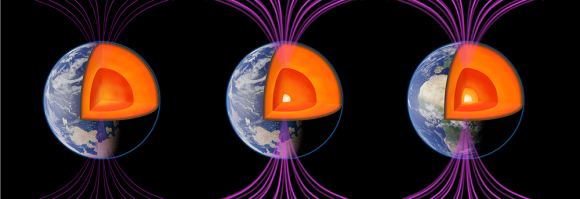
A depiction of Earth, first without an inner core; second, with an inner core beginning to grow, around 550 million years ago; third, with an outermost and innermost inner core, around 450 million years ago. University of Rochester researchers used paleomagnetism to determine these two key dates in the history of the inner core, which they believe restored the planet’s magnetic field just before the explosion of life on Earth. (University of Rochester illustration / Michael Osadciw)
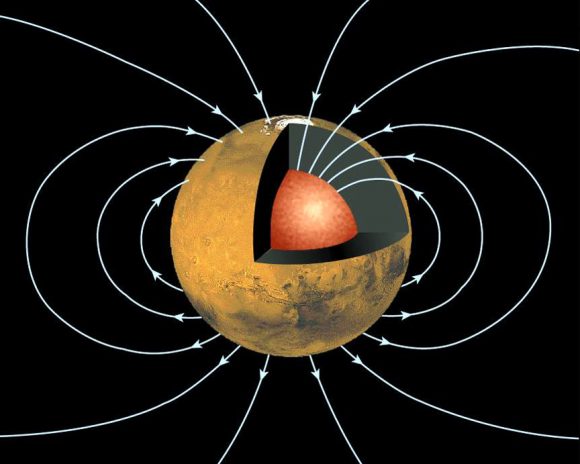
This figure shows a cross-section of the planet Mars revealing an inner, high-density core buried deep within the interior. Dipole magnetic field lines are drawn in blue, showing the global scale magnetic field associated with dynamo generation in the core. Ancient Mars must have had such a field, but today it is not evident. Perhaps the energy source that powered the early dynamo has shut down. Credit: NASA/JPL/GSFC